Precepts retreat and jukai-e: Four people received lay precepts at the end of the annual July 5-day precepts retreat, which included lectures and discussion, work periods, and meals taken using oryoki. Brad Keiku Uebinger, Alli Dokin Gillet, Owen Gentoku Miller and Abby Eiju Johnson received their rakusu, dharma names and lineage papers, and other sangha members joined some or all of the retreat.
Novice ordination: On the afternoon following the morning jukai-e, Myogen Ahlstrom was ordained as a novice. He received his koromo, rakusu, zagu, okesa, dharma name paper and lineage paper, and will be officially registered with the denomination. Ordination as a novice is the first step to becoming fully authorized clergy. Myogen transferred to Hoko when his original teacher, Zuiko Redding of the Cedar Rapids (IA) Zen Center became terminally ill last year.
Coming upRyaku fusatsu: Our monthly ryaku fusatsu ceremony will be carried out tonight, Monday, July 15th, at 7 pm EDT, with Hoko officiating. Ryaku fusatsu is our monthly ceremony of renewing our aspiration to practice with the sixteen bodhisattva precepts. All are welcome, in-person and virtually, whether or not you've formally received precepts. Great Tree guest talk: Esho will be giving a virtual dharma talk on Saturday at 10 am EST for Great Tree Zen Women's Temple in Asheville, NC. Her topic is "Uncertainty," and the talk will be preceded by half an hour of zazen. Join here, and go here for the complete schedule at Great Tree. Talks are generally recorded and posted to the Great Tree YouTube channel.  Six Points discussion #3: Uchiyama Roshi's balancing peace and progress (Thursday, July 25)
We'll discuss the significance of zazen and study in modern daily life so that we can maintain a balance between progress and peace of mind. We live with a tension between chasing after or escaping from things and avoiding taking any action at all in order to remain calm. How does shikantaza teach us how to take the necessary wise and compassionate action without fanning the flames of our delusion? Those participating online can join using the green button on our virtual practice page. Learn more about lineage & legacy here. Quiet August's simplified practice schedule: During February and August at Sanshin, the regular practice schedule becomes quieter, less busy, and more focused on zazen. We let go of chanting services and Shobogenzo Zuimonki readings on weekday mornings, most Sunday dharma talks (which are replaced by one more period of zazen), and all evening practice activities (except for our Getting Started in Zen Practice sessions, to keep open a meaningful access point during this quieter time for folks who are new to the practice or community). Read more about our quiet months on this page.  September 5 - 8 sesshin: Sesshin at Sanshin is an opportunity to practice zazen without distraction. It's one of the core activities for us in this dharma family, and we pay a lot of attention to it. We set aside the usual activities -- or entertainments -- of temple life, like work periods, meetings with teachers and dharma talks, and focus completely on zazen. We practice in complete silence following a 4 am to 9 pm daily schedule that consists simply of fourteen 50-minute periods of zazen with one-hour periods for oryoki meals and a bit of personal time. This sesshin-without-toys style of practice was created by our founder's teacher, Kosho Uchiyama Roshi, and practiced at Antaiji in Kyoto, Japan. We carry on and offer this tradition of our lineage here at Sanshin. We've added some new resources to help participants better understand our style of sesshin. See those here, particularly this comprehensive page on the origin and intention of Sanshin style sesshin. You may also register on this page. World religious landscapeNew research from Pew offers insights into religion and spirituality in East Asian societies today
Sanshin Network Esho's offerings: Having completed her term as shuso at Sanshin, Esho Morimoto is offering two kinds of teaching to practitioners and sanghas. 1) Rakusu and okesa sewing at any temple in need of a sewing teacher. Esho became a sewing teacher in 2018 and taught at the Brooklyn Zen Center and Ancestral Heart Zen Monastery in Millerton, NY. She moved to Bloomington, IN in the spring of 2022 to carry out an okesa sewing apprenticeship with Yuko Okumura and to practice with Sanshin. Completing the apprenticeship in the summer of 2023, she taught rakusu and okesa sewing at Tassajara Zen Mountain Center, Carmel Valley, CA during its fall 2023 and winter 2024 angos while she was practicing there as a part of her priest training. She now teaches robe sewing in the style of our dharma great-grandfather, Kodo Sawaki. 2) Basic conversational Japanese. Esho offers lessons or tutoring online or in person. If there is interest in forming small classes and studying with others, that may be possible. Note that this offering is not about translating Dogen texts, reading classical Japanese, or doing other high-level Buddhist study. However, some knowledge of basic Japanese can be very helpful for practitioners, especially those planning to practice in Japan itself. If you are interested in either of these offerings, please contact Esho directly for more information or to make arrangements. Three new ordinations in Colombia: Densho says, "I am sharing some pictures of the Tokudo ceremony we had on Saturday. I ordained three new monks, Chisho, Shojun and Sozan, from left to right in the picture wearing white kimono. We are grateful that our monks' sangha is growing so we can strengthen our vow to spread Todo-san's lineage and teachings."
Are we reaching you? Do we have the best and most current contact information for you? If you've changed your e-mail address or moved to a new place of residence, or if we've never had complete information about how to reach you, it's time to update your record. Please take a moment to go here to send us the contact information you'd like us to use. We'll check it against your current record and update as needed. Don't miss any of the upcoming communications from Sanshin -- update your info today!
0 Comments
Other news
 Soto Zen North America gets underway: Hoko has been asked to serve on the board of directors for the newly-forming Soto Zen North America, an organization of Sotoshu-recognized clergy that will very gradually take over some of the functions of the existing denomination on this continent. As Soto Zen N. A.'s communications officer, she's put together a website, and an initial newsletter went out this month. There is still much to organize and build and many structures to put in place, but the actual beginning of operations is the fruition of many years of work and planning.  New translations: Chapters Six and Seven of Great Robe of Liberation: A Study of the Kesa (Kesa no Kenkyu) by Echu Kyuma have now been translated and are available online. Chapter Six covers classification of different categories of kesa, and Chapter Seven discusses teachings on the virtue or merits of practicing with the kesa. The book has served as an indispensable resource for anyone wanting to study, sew, or wear robes in the Soto Zen Buddhist tradition. Kyuma Roshi, a longtime student of both Kodo Sawaki and Kosho Uchiyama, generously shares his research and personal experience, presenting a kind of technical manual with in-depth explanations of everything from the proper color, size, and materials of a robe, to the actual sewing, to how to wear it and care for it. Practice recap
Coming upRyaku fusatsu: Our monthly ryaku fusatsu ceremony will be carried out tonight, Monday, June 17th, at 7 pm EDT, and Hosshin Shoaf will officiate as a recently transmitted teacher. Ryaku fusatsu is our monthly ceremony of renewing our aspiration to practice with the sixteen bodhisattva precepts. All are welcome, in-person and virtually, whether or not you've formally received precepts.
Precepts retreat with Hoko (July 2 - 7): Registration is now open for practitioners who wish to participate in this year's precepts retreat without formally receiving precepts. This retreat focuses on the study of the sixteen bodhisattva precepts that Buddhists receive as guidelines for living a life of practice. The daily schedule includes zazen, group discussions on the precepts led by Hoko, work practice and silent meals. A public precepts ceremony (jukai-e) is held on the last day of the retreat, during which those receiving the precepts will make their vows and receive a dharma name and a rakusu, or small robe, which they have sewn beforehand. Registration for in-person participation will remain open through Tuesday, June 25th; virtual participation without registration is also welcome. Learn more and register here.  Myogen Ahlstrom ordination (July 7, 2 pm): Following the jukai-e potluck lunch, the sangha will return to the zendo to lend its support as Mark Myogen Ahlstrom takes ordination as a novice. He was a leader of the Bloomington-Normal (IL) Zen Group and a student of Zuiko Redding of the Cedar Rapids (IA) Zen Center for many years before moving to Indiana and establishing his practice at Sanshin. Virtual as well as in-person attendance is welcome. American religious landscapeMost religious groups show declines in attendance over the past two decades: According to a new Gallup study, majorities of Jewish, Orthodox, Buddhist and Hindu Americans say they seldom or never attend religious services. Twenty-six percent of Orthodox adults, 22% of Jewish adults, 14% of Buddhist adults and 13% of Hindu adults attend services regularly. Although Buddhist and Hindu adults have similar levels of regular attendance, Buddhist adults are much more likely to say they seldom or never attend (75%) than Hindu adults (51%). The largest segment of Hindu Americans, 36%, say they attend about once a month. READ MORE Sanshin Network
In general, I think it is difficult to appreciate the value of a way of life whose heart is the intensive practice of zazen. During the week we sit for five periods of zazen a day, and monthly, with the exception of February and August, the intensive sesshin of fourteen periods each day is held for five days. Furthermore, as it is a practice that is carried out in the mountains, daily activities are carried out in solitude, silence, without any type of toys, distractions or promises. This creates the conditions so that the individual cannot escape from himself, and is forced to accept and let go of the flow of thoughts and emotions. It is a practice that, in my limited experience, is quite confronting, and, at the same time, illuminating and peaceful. When I began my practice approximately 9 years ago in Bogotá, Colombia, under the guidance of Densho Sensei, I remember that sitting through a forty-minute session was a great achievement that I celebrated for the simple fact of not having moved despite the anxiety and physical pain. Likewise, I keep in mind that the first day in my first sesshin, which was not so intensive, I wanted to run away. My whole body hurt, the silence at meals tormented me. I can't imagine how physically I could have endured just one day of 14 50-minute sittings. As a student of Densho Sensei, I not only worked on my physical posture, but I had the valuable opportunity to study fundamental texts, such as the Bendowa and GenjoKoan, which helped me in my quest to understand the type of attitude to have during practice. For this reason, from my experience, the possibility of appreciating and being grateful for the type of practice that Shoryu Sensei offers, depends on having had previous experience in the lineage of Okumura Roshi under the guidance of Densho Sensei, to whom I am extremely grateful. This short memory exercise on the history of my practice has made me consider the value of having a family called the Sanshinji network. A project that I still do not fully understand, but I believe, from the bottom of my heart, that it is essential to preserve and share the teachings and practice of Okumura Roshi. There need to be temples in the city as well as in remote areas, free from the hustle and bustle of society, for the movement of the wheel of dharma to remain alive. I believe that, among the many factors that allow the expression of personal vow, community is one of the most important. As final words, I also appreciate Hoko's practice and efforts to nurture this family, and I hope that these words and my daily practice can collaborate to strengthen the ties of the Sanshinji Network. Updates: Support for Soto Zen temples affected by the Noto earthquake in January For several months, Jisho Takahashi, a dharma heir of Okumura Roshi, has been leading an effort to collect donations for two temples in the Noto area of Japan which were damaged by an earthquake in January, and which have connections to Sanshin: Ryushoji and Eifukuji. Visit Jisho's fundraising page for more background on Sanshin's connections and to donate. Below, Jisho offers a few updates on the situation, as well as photos of the rebuilding process:
Are we reaching you? Do we have the best and most current contact information for you? If you've changed your e-mail address or moved to a new place of residence, or if we've never had complete information about how to reach you, it's time to update your record. Please take a moment to go here to send us the contact information you'd like us to use. We'll check it against your current record and update as needed. Don't miss any of the upcoming communications from Sanshin -- update your info today!
From our directors Building Our Future: Updates from Sanshin Zen Community Michael Komyo Melfi, President, and Laura Miller, Vice President As stewards of Sanshin Zen Community, the board of directors endeavors to continually envision and enact strategies that uphold our shared mission and vision. Over the past year, amidst the challenges and opportunities that have arisen, we have dedicated ourselves to the development of a long range plan that charts our course for the next fifteen years. This comprehensive plan, meticulously crafted during the final quarter of 2023 and officially passed in January 2024, encompasses a spectrum of initiatives aimed at realizing our practice vision. From housing and support plans to staffing strategies, renovation endeavors to residential practice frameworks, building initiatives to succession planning, every facet of our community's growth and sustainability has been considered. In the subsequent months, we have diligently worked towards operationalizing the initial steps of this transformative plan. In this vein, we are excited to share that the board is moving forward on some important items to implement two key priorities - restarting residential practice while continuing to support housing for the Okumuras. Residential practice is an integral part of Sanshin’s strategic plan and Okumura Roshi’s vision for the future of our community, but our property requires some work before we can support residents. To create space for this work and support the continued realization of our community's mission and vision, we are working with the Okumuras to find alternative housing with the goal of them moving into a new residence of their choosing by the end of 2024, so that we will be free to renovate our existing building for residential practice. With this move, Sanshin will continue providing housing support to the Okumuras in the form of a housing allowance. We are excited to see this work move forward, and ask for your support to make it happen. Please give here to support the Okumuras' move and the development of residential practice. Thank you!
Other newsA wedding at Sanshinji: On April 17th, Doju Layton and Alli Gillett were married at Sanshinji. The ceremony was officiated by Hoko, with Sawyer serving as ino. Family members of Doju and Alli were also in attendance for the happy occasion. Doju is an ordained student of Okumura Roshi, and Alli will be receiving lay precepts from Hoko this July. Practice recap
Virtual dharma study intensive: From May 2nd to May 11th, about seventy practitioners participated from throughout the U. S. and beyond via Zoom in a 10-day dharma study intensive with Okumura Roshi, focused on Menzan Zuiho's important text, Jijuyu Zanmai. The schedule consisted simply of a lecture and Q & A with Okumura Roshi each morning, which practitioners folded into their own schedules of zazen and day to day responsibilities and practice from home. A small support crew was present in-person to facilitate technical and zendo needs. This event is the successor to the genzo-e retreats of the past twenty years, and is held online twice a year - the next one will be carried out in November.
Throughout the month, practitioners also gathered a few times at the sesshin vegetable garden up the road from the temple to construct a bamboo trellis for the peas, thin radish, carrot, and lettuce seedlings, hill the potatoes, plant cucumbers and tomatoes, and spread Sanshin lawn grass clippings as a mulch and a good nitrogen source. A few crops should be ready for harvest in time for June sesshin! Coming up
Virtual and in-person participation is welcome; no registration required. We'll sit zazen at 6:30 pm EDT, and discussion will follow from 7 to 8. For a complete schedule of the year's discussion evenings and more, visit our lineage & legacy webpage.
Ryaku fusatsu in June: Ryaku fusatsu is our monthly ceremony of renewing our aspiration to practice with the sixteen bodhisattva precepts. Our next one happens Monday, June 17th, at 7 pm EDT and the ceremony typically lasts about an hour. Hosshin Shoaf will officiate. All are welcome, in-person and virtually, whether or not you've formally received precepts. American religious landscapeReligion and feelings of closeness: Religiously unaffiliated Americans are far less likely than their affiliated counterparts to feel close to others in the U.S. (51% vs. 73%), according to a new Pew Research Center analysis. This pattern is mirrored in other measures of religiosity. For example, Americans who say religion is not too or not at all important to them, or who never attend religious services, are generally less likely to feel close to other Americans. Religiously unaffiliated Americans are also much less likely than those who are religiously affiliated to feel connected to others in their local community (43% vs. 60%). This pattern aligns with previous research on interpersonal connectedness and philanthropy among religious people. Religious people tend to be more likely than nonreligious people to volunteer and give to charity – though they prefer that these activities benefit others within their own religious groups. READ MORE Sanshin Network Regular updates from Okumura Roshi's Japanese ordained students: Jikei Kido, Issan Koyama, Jisho Takahashi, and Esho Morimoto have begun to offer regular updates on their teachings and practice lives, on a shared "Linktree" webpage, here. (Their site will also be linked from our Sanshin Network page). The project is an evolving continuation of the regular updates previously offered by Okumura Roshi himself for friends and practitioners in Japan during his time as Sanshinji's abbot. This group's upcoming posts may be of particular interest for practitioners in Japan, Japanese-speaking practitioners living elsewhere, or anyone who is interested in the practice perspectives of these Japanese and Japanese-American practitioners with significant experience of Soto Zen in the United States, in large part through Okumura Roshi's teaching and practice at Sanshinji, and who are now living and practicing throughout the United States and in Japan. Some content is in Japanese and some is in English. Currently, new material is posted about once a month, and they hope to increase this over time. Jukai-e in Belgium: Four people received the precepts from Mokusho Depreay at Daishinji in Mons, Belgium: Serge Etsudō, Lauriane Dōshin, Nathalie Jikidō and Sandra Shijun, in the presence of the sangha, friends and family. All of them had spent the last few months sewing their rakusus at the temple. Are we reaching you? Do we have the best and most current contact information for you? If you've changed your e-mail address or moved to a new place of residence, or if we've never had complete information about how to reach you, it's time to update your record. Please take a moment to go here to send us the contact information you'd like us to use. We'll check it against your current record and update as needed. Don't miss any of the upcoming communications from Sanshin -- update your info today!
Other news
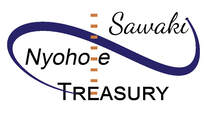 New translation: Chapter Five of Great Robe of Liberation: A Study of the Kesa (Kesa no Kenkyu) by Echu Kyuma has now been translated and is available online. This chapter covers various methods for calculating the finished dimensions of the okesa. The book has served as an indispensable resource for anyone wanting to study, sew, or wear robes in the Soto Zen Buddhist tradition. Kyuma Roshi, a longtime student of both Kodo Sawaki and Kosho Uchiyama, generously shares his research and personal experience, presenting a kind of technical manual with in-depth explanations of everything from the proper color, size, and materials of a robe, to the actual sewing, to how to wear it and care for it. 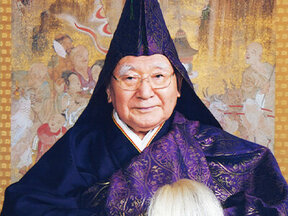 A message from Sotoshu's head priest: Each year, the Head Priest of Sotoshu gives an official message. See below for a link to the full text of Rev. Minamizawa Donin's message translate into English: The various issues facing the world today are complex and layered. It is not an exaggeration to say that there is a crisis where the basic human rights of a peaceful and dignified life and the sanctity of life are threatened and the threat is expanding. As followers of One Shakyamuni Buddha and Two Ancestors, we must be aware of the true Way. READ MORE Practice recap
If you are participating in the first period of a given weekday morning's zazen during the ango, please be seated five minutes earlier than usual (before 6:00 am EDT), in time for the shuso's bows.
Buddha's birthday 2024: On Sunday, April 7th, the sangha celebrated the occasion of Buddha's birthday. After Okumura Roshi's talk tracing the story of Buddha's birth from early Buddhist and Mahayana tradition, through Dogen Zenji and to us today, we held a ceremony that included chanting the Heart Sutra as a sangha and offering incense and bathing a baby Buddha statue with tea one by one, amidst an offering of flowers. The day concluded with a potluck lunch. We carry this out each year on the Sunday nearest to April 8th.
Coming up
Ryaku fusatsu in May: Ryaku fusatsu is our monthly ceremony of renewing our aspiration to practice with the sixteen bodhisattva precepts. Our next one happens Monday, May 13th, at 7 pm EDT, and Hosshin Shoaf will officiate for the first time as a newly transmitted teacher. All are welcome, in-person and virtually, whether or not you've formally received precepts. June sesshin: Registration is now open for our 5-day June sesshin (June 4 - 9), which we carry out in the heart of our annual three-month practice period, or ango (see above). Sesshin at Sanshin is an opportunity to practice without distraction. We set aside the usual activities -- or entertainments -- of temple life, like work periods, meetings with teachers and dharma talks, and focus completely on zazen. This sesshin-without-toys style of practice was created by our founder's teacher, Kosho Uchiyama Roshi, and practiced at Antaiji in Kyoto, Japan. We carry on and offer this tradition of our lineage here at Sanshin. LEARN MORE AND REGISTER American religious landscapeMany say their beliefs are at odds with mainstream culture: Among American adults, there is a growing sense that their own religious beliefs conflict with the society in which they live, according to a new Pew survey. Nearly half say there is a “great deal” of conflict or “some” conflict between their own religious beliefs and mainstream American culture, up from 42% who said this in 2020. Twenty nine percent say they think of themselves as part of a minority group because of their religious beliefs, up from 24% in 2020. Majorities in every religious group analyzed in the study agreed that religion’s influence in public life is shrinking, as did most Republicans and Democrats, and most across age groups, and most think this is not a good thing. READ MORE Sanshin networkPractice reflections from Kotaiji Two of Okumura Roshi's ordained students recently spent time practicing in residence at Kotaiji in Nagasaki, Japan, as part of their clergy training and credentialing process with Sotoshu. Jikei Kido from Oakland, CA was ordained as a novice in December of 2022, and Gyoriki Herskamp from Germany received dharma transmission in October of 2023. They offer reflections on their experiences below:
I also had to reset. I no longer wanted to work in my old job and wanted to give up the practice center in the Black Forest, in order to start over in a new place, closer to the people. I wanted to step down from the lonely wonderful mountains to the valley, back to the people again. Maybe this is one last big adventure in my life, in any case, based on my practice, I knew I had to do it. READ MORE of Gyoriki's account of his time at Kotaiji here, and of his zuise ceremonies at Eiheiji and Sojiji here. Two transmissions: Over the course of about three weeks in mid to late March at Sanshinji, Okumura Roshi gave dharma transmission to two of his students: Issan Koyama, who leads the New York Zen Community for Dogen Study, and Hosshin Shoaf, who serves as Sanshin's work leader in Bloomington. Are we reaching you? Do we have the best and most current contact information for you? If you've changed your e-mail address or moved to a new place of residence, or if we've never had complete information about how to reach you, it's time to update your record. Please take a moment to go here to send us the contact information you'd like us to use. We'll check it against your current record and update as needed. Don't miss any of the upcoming communications from Sanshin -- update your info today!
Practice recap
Work on natural fences and a door: On a warm and sunny day in Bloomington, about ten local practitioners participated in this month's work day on Sunday, March 3rd. Inside the temple, work continued on mounting a sliding barn door for our kitchen. Outside on the land, practitioners worked on two fence building projects, primarily using natural materials already present on temple grounds: replacing the north side of the bamboo fence surrounding the moss garden, and beginning to construct a "dead hedge" barrier along Sanshinji's northern boundary using tree limbs and branches from our (enormous) brush pile. Uchiyama Roshi memorial sesshin: From the evening of March 7th through the morning of March 10th, nine practitioners carried out our 3-day March sesshin, which we dedicate each year to the memory of our founder's teacher, Kosho Uchiyama Roshi. After cleanup and a closing circle on Sunday morning, sesshin practitioners joined other sangha members for regular Sunday practice, including zazen and a talk from Okumura Roshi. The day concluded with a brief memorial service for Uchiyama Roshi, during which about twenty practitioners chanted the Heart Sutra together and offered incense one by one. Coming upRyaku fusatsu: This Monday, March 18th at 7:00 pm EDT, we'll carry out our monthly ceremony of renewing our aspiration to practice with the precepts. Everyone is welcome, regardless of whether or not you've formally taken precepts, in-person or virtually via Zoom.
May virtual dharma study intensive: Registration is now open for Okumura Roshi's series of ten lectures on Menzan Zuiho's Jijuyū Zanmai, as part of a virtual dharma study intensive (May 2 - 11). Jijuyū Zanmai was written as a guide to zazen for lay students. In it, Menzan explains that the Buddha's samadhi is nothing other than the zazen which we practice with our body and mind, and he urges us to live in accordance with the three-fold pure bodhisattva precepts. Okumura Roshi has newly translated this important text for this May's study intensive. LEARN MORE AND REGISTER Sanshin Network
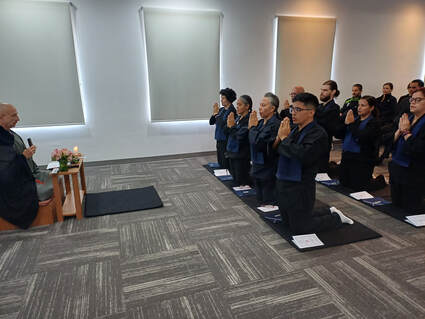 Jukai ceremony in Caracas, Venezuela: In February, Okumura Roshi's dharma heir and founder of Soto Zen Colombia Densho Quintero traveled to Caracas, Venezuela to officiate a lay precepts ceremony for practitioners of an affiliated group, Sangha Dokan Venezuela, which is led by Jakusho Pignatiello.
Are we reaching you?
Do we have the best and most current contact information for you? If you've changed your e-mail address or moved to a new place of residence, or if we've never had complete information about how to reach you, it's time to update your record. Please take a moment to go here to send us the contact information you'd like us to use. We'll check it against your current record and update as needed. Don't miss any of the upcoming communications from Sanshin -- update your info today!
American religious landscapeBuddhism among Asian Americans: According to a recent Pew Research Center study, about one-in-ten Asian American adults (11%) say their religion is Buddhism, a slight decline from 14% in 2012. A much larger share (21%) currently say that, aside from religion, they feel close to Buddhism for reasons such as ancestry or culture. In total, one-third of Asian Americans express at least some connection to Buddhism. Among East Asian origin groups (Chinese, Japanese and Korean Americans), most respondents who have a connection to Buddhism do not identify as Buddhist, but rather say they feel “close to” Buddhism aside from religion. The same is not true among those with origins in Southeast Asia. For example, while Vietnamese Americans and Japanese Americans are equally likely (62% each) to express some connection to Buddhism, only 19% of Japanese Americans identify as Buddhist, compared to 37% of Vietnamese Americans. More Japanese Americans do not identify with any religion but say they feel close to Buddhism aside from religion (30%). Another 12% identify with a religion other than Buddhism but feel close to Buddhism aside from religion. LEARN MORE Practice recap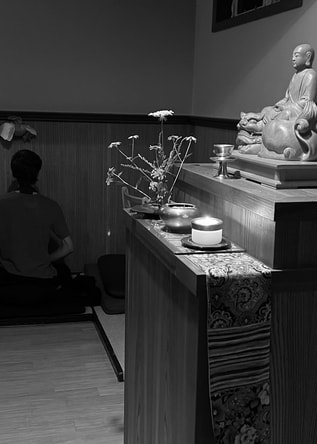 Practice carries on in "quiet February": In the midst of a warm first half of the month here in Bloomington, practitioners have settled into February's simplified practice schedule, letting go of morning liturgy and Zuimonki readings, most Sunday dharma talks, and evening practice activities. This seasonal practice rhythm, echoed again in August, is quieter and more focused on zazen within a less intensive schedule. It is related to Uchiyama Roshi's sesshin schedule at Antaiji, where a sesshin was held every month except February and August, marked as the coldest and hottest months each year. Preparations for March sesshin (see below) have carried on outside of a designated sangha workday, as practitioners have worked on their own or in small groups to remove the paint from our recently donated zendo bell to increase its tonal clarity, construct a new mallet for ringing the bell, hook up another fan in the zendo, and continue the installation process of a sliding barn door to more fully separate our kitchen from the zendo.
Coming up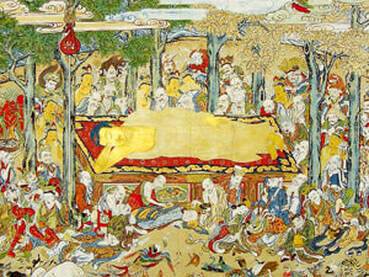 Parinirvana ceremony & potluck (Sunday, Feb 18): Next Sunday we will mark the occasion of Shakyamuni Buddha's parinirvana (nehan). Note that this Sunday's schedule is different from the "quiet February" schedule of this month's other three Sundays. This is one of the sanbukki, or Three Buddha Days, marking the important events in Shakyamuni's life -- his birth, awakening, and death. This Sunday, Hoko will give a dharma talk on "everyday parinirvana," and then we'll hold a brief ceremony followed by a potluck lunch. 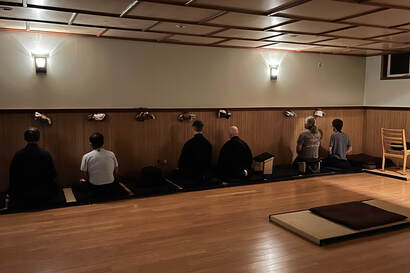 Uchiyama Roshi memorial sesshin (Mar 7 - 10): A few spaces remain for participation in our upcoming March sesshin, which we dedicate to the memory of Kosho Uchiyama Roshi, the teacher of our founder, Shohaku Okumura. He died on March 13, 1998. We will hold a brief memorial service following the usual Sunday morning zazen and dharma talk, given by Okumura Roshi himself. LEARN MORE AND REGISTER HERE
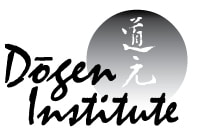 Save the date for the May virtual dharma study intensive (May 2 - 11): Plans are underway for our Dogen Institute to sponsor the second virtual dharma study intensive with Sanshin's founding teacher Okumura Roshi this May. During the inaugural event last November, Okumura Roshi lectured on Dogen Zenji's Shobogenzo Zazenshin. During this May's series of ten lectures, he will talk on Menzan's Jijuyū-zanmai (Samadhi of the Self). Jijuyū-zanmai was written by Menzan Zuiho (1682-1769) as a guide to zazen for lay students. In it, he explains that the Buddha's samadhi is nothing other than the zazen which we practice with our body and mind, and he urges us to live in accordance with the three-fold pure bodhisattva precepts. Okumura Roshi translated this important text in the early 1980s for Sotoshu, and it appeared originally in the book "Dōgen Zen," along with other writings. He later revised the translation slightly for its appearance in the 1988 edition entitled "Heart of Zen." Although Sotoshu still makes this available as a free e-book, Okumura Roshi wishes to newly translate the work for the upcoming dharma study intensive. Stay tuned for further details and registration information in the coming weeks. Sanshin NetworkTransmission complete: Jisho Takahashi has completed dharma transmission with Okumura Roshi. She has returned to Muryo-ji in Nagano prefecture in Japan, where she has lived and practiced since 2020. Before that, she also practiced for two years in residence at Aichi Senmon Niso-do, and regularly practiced at Sanshin while living in Bloomington a few years ago. 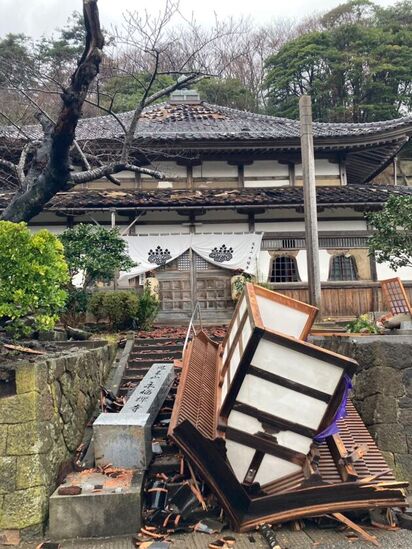 Opportunity to support two temples damaged by an earthquake: Jisho Takahashi has organized a fundraising page to offer financial support for two temples in Japan which experienced significant damage from an earthquake that struck the Noto Peninsula on New Year's Day, 2024. These two temples have connections to Sanshin. Ryushoji was founded by Rev. Waju Murata, who practiced at Antaiji about 40 years ago at almost the same time as Okumura Roshi. The abbot of the other temple, Eifukuji, is Rev. Koshu Ichibori, who visited Sanshin in 2017 through a Sotoshu program, staying in Bloomington for several days and later visiting Ryumonji in Iowa and Great Tree Zen Women's Temple in North Carolina. All funds raised will be distributed to Ryushoji and Eifukuji, and updates on their long-term rebuilding process will be posted to the fundraising page every few months. LEARN MORE 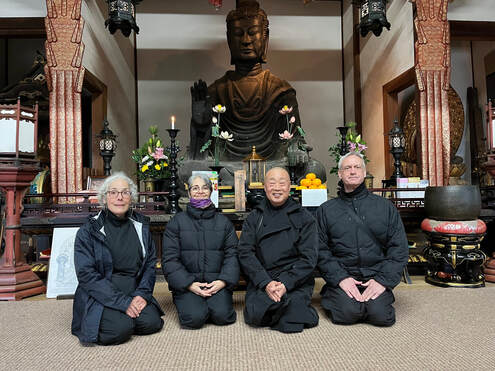 "Arrived at Asuka Village, gathered in front of the first Japan-made Buddha statue at Japan's first Buddhist temple, Asuka-dera (AD. 588)" "Arrived at Asuka Village, gathered in front of the first Japan-made Buddha statue at Japan's first Buddhist temple, Asuka-dera (AD. 588)" New York Zen Community in Japan: Practitioners with the New York Zen Community for Dogen Study, founded and led by Issan Koyama, are traveling through Japan for three weeks visiting important sites in Buddhist and Soto Zen history. If interested in following their footsteps virtually, please send friend requests to either/both New York Zen Community for Dogen Study and/or Hajime Issan Koyama on Facebook, or "Follow" Issan Koyama on Instagram. New temple in Colombia: The Soto Zen Colombia sangha has established a new companion center for practice in the mountains outside of Ibagué, Colombia. Densho Quintero reports: "On Friday, January 26, we held a simple ceremony to begin the practice in our rural center Hosenzan Zenshinji, Dharma Spring Mountain - Heart of Zen Monastery. A privileged place full of life, diverse animals and wonderful birds, with a natural birth of water. Place of recognition and silence in which we have been welcomed as guests by the majestic mountain and its inhabitants. Our commitment is to protect and conserve life and water. May the practice of the Way continue to bring light to confused hearts so that peace may reign."
 Practice opportunities in Minnesota: In March, Shodo Spring will continue her monthly series of online classes exploring core Soto Zen teachings with a study of Dogen's Genjokoan. She will also be holding sesshin from March 15-17, as well as a series of three "Earth Apprentice Retreats" in April, May, and July, combining spiritual relation with land and meditation practice. For more information about the Mountains and Waters Alliance and their practice offerings, see their 2024 calendar.
Are we reaching you?
Do we have the best and most current contact information for you? If you've changed your e-mail address or moved to a new place of residence, or if we've never had complete information about how to reach you, it's time to update your record. Please take a moment to go here to send us the contact information you'd like us to use. We'll check it against your current record and update as needed. Don't miss any of the upcoming communications from Sanshin -- update your info today! A Lion Knows a Lion's Roar
 Sangha Stewardship workshops in 2024: Once we become established as practitioners in our sanghas and demonstrate that we have some skills and abilities to share, it's not uncommon to be asked to fill various leadership roles: board officer, tenzo, committee member, ino, or other service positions. Sometimes we may feel that these activities contribute to the development of our own practice, and sometimes we might find them distracting commitments of a large amount of time. We might feel proud to be asked to serve, but resentful of the extra workload we've agreed to carry. As part of its work practice in 2024, Sanshin will be offering two short workshops on bodhisattva leadership as experienced through the positions of sangha stewards, both practice leaders and administrative leaders. On April 5th and 6th, we'll explore the roles of tenzo (head cook) and ino. On October 5th and 6th, we'll explore the role of director, specifically in a sangha board of directors context. Workshops include both higher-level doctrinal context and practical applications. These sessions are also particularly aimed at small sanghas in our region which may be ready to add more structure to their communities, to take on more traditional practices, or to move from being informal gatherings to legally recognized organizations. Stay tuned for more information and registration details for the April workshop in the coming weeks. 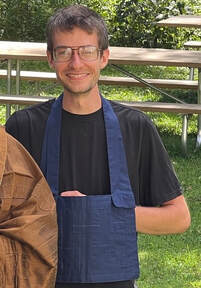 Operations manager: After a year working as Sanshin's event coordinator, Bloomington practitioner Sawyer Jisho Hitchcock has been hired as Sanshin's operations manager. He's taken on a few more responsibilities in addition to previous duties, such as compiling this and future newsletters, assisting our work leader in coordinating work practice at the temple, facilitating organizational discernment towards continuing to operationalize board-adopted policies and aspiration statements, and generally working with the board of directors, Hoko, Okumura Roshi, the Dōgen Institute, and the sangha at large as we aim to carry out our everyday practice and mission together "without hindrance." Sawyer grew up primarily in central Indiana, and found his way to Sanshinji in 2016, while living at his family’s cabin house a half-hour away in Yellowwood State Forest. He lived at Sanshin as a resident practitioner from April through December of 2022 and found it deeply compelling to be a part of establishing residential practice here. As a part-time farmhand, he has found it meaningful to begin to develop relationships between Sanshin and nearby small, sustainably-minded farms, sourcing produce from the local community for the sesshin and retreats he helps to coordinate. He received lay precepts from Hoko Karnegis in July of 2023, and is glad for the opportunity to continue to practice, serve, and work with the sangha in this role. Board of directorsFrom the Treasurer: Gene Kishin Elias The year 2023 is behind us, and we are looking forward to 2024. The list of what we want to do this year and beyond is long, and the board of directors is working very hard to prioritize what we want versus what we can feasibly do. By the January board meeting, we will have finalized our budget for 2024. But that is the future. I thought it would be helpful to understand how your gifts were used in 2023. The chart above indicates how those monies were spent. As shown by the chart, the largest expenses have been and will continue to be teaching, research and content generation – that is by far our primary mission. Our overhead includes a lot of expenses that we simply don’t have any control over, like keeping the lights on, heating and cooling, and internet costs, among other items. The board works very hard to ensure our monies go to the most important priorities. Your gifts of financial support enable Sanshin to make Soto Zen practice available in its own particular style, which is based on the teachings of the Buddha, Dōgen Zenji, and Sawaki, Uchiyama and Okumura Roshis. Around the US and across the worldwide Sanshin Network, thanks to friends like you we continue to carry out our mission of enabling the investigation of interconnectedness as it manifests in community by engaging in six points of Soto Zen practice. If you have questions about Sanshin's finances, please email me. Thank you for your support, and may your life be filled with kindness, joy and magnanimity. Practice recap Bell dedication: Following Okumura Roshi's Sunday dharma talk on January 7th, we held a dedication ceremony for an old Buddhist temple bell donated to Sanshin by Bloomington community members John Lawrence and Elaine and Phil Emmi. The bell will be used to mark the beginning and end of every zazen period we do henceforth. The ceremony was a simplified version of what would traditionally be done for the dedication of a newly cast bonsho in a bell tower, including ceremonial strikes of the bell by one of the donors, our senior teacher Hoko, and board president Michael Komyo Melfi on behalf of the sangha. The sangha also chanted the Heart Sutra, which was followed by an extended eko for the occasion and remarks from the donor.
January work day: During this month's work day, we took on a few indoor projects amid temperatures near zero degrees Fahrenheit outside. Practitioners reorganized and added recently donated books to our donated dharma book library, shredded old administrative files in a continuing effort to clear office space, affixed one of two planned wall fans in the zendo, started the process of removing the paint from our recently donated zendo bell to increase its tonal clarity, and continued work on installing a sliding barn door to the kitchen just outside of the zendo. Coming up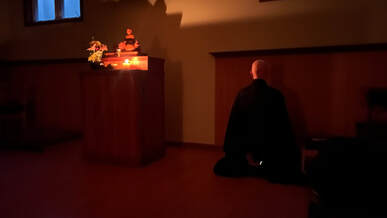 Simplified February practice schedule: During February and August at Sanshin, the regular practice schedule becomes quieter, less busy, and more focused on zazen. This seasonal practice rhythm is related to Uchiyama Roshi's sesshin schedule at Antaiji, where a sesshin was held every month except February and August, marked as the coldest and hottest months each year. Although we have centralized heating and air conditioning in the zendo at Sanshinji, we can acknowledge the facts of winter and summer in deeply settling into these two months of quieter, simplified practice activities. See our Schedules & Calendars page for full information on the changes. Ryaku fusatsu: There will be no ryaku fusatsu ceremony in February, due to the simplified practice schedule. Our next ceremony of renewing our aspiration to practice with the precepts happens March 18th at 7 pm. Both in-person and virtual participation is possible, and everyone is welcome regardless of whether or not you've formally taken precepts. 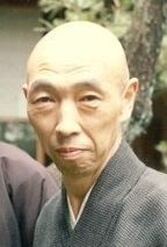 Uchiyama Roshi memorial sesshin (Mar 7 - 10): We dedicate our March sesshin to the memory of Kosho Uchiyama Roshi, the teacher of our founder, Shohaku Okumura. He died on March 13, 1998. We will hold a brief memorial service following the usual Sunday morning zazen and dharma talk, given by Okumura Roshi himself. LEARN MORE AND REGISTER HERE Visit our Schedules and Calendars page for information on all upcoming practice activities. Sanshin Network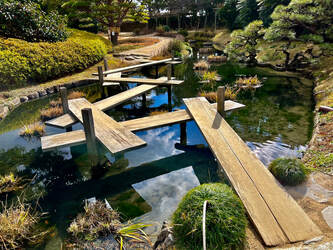 Sangha-travels with Issan: Members of the New York Zen Community for Dogen Study, founded and led by Issan Koyama, are preparing to visit important Soto Zen sites for themselves. Issan says, "February is approaching which means we are moving toward the launch of our pilot Dōgen Pilgrimage Tour of Japan, February 1 through February 22nd. It is with excitement that we look forward to visiting sites important to Buddhism while gaining a visceral experience of Dōgen’s life and teaching. A few sangha members will be joining Paul and me on a three weeks trip through Japan. The route is Tokyo - Nara - Asuka Village - Koya-san - Eihei-ji (overnight stay program) - Kyoto - then to Hakata (2 days in Myoko-ji, visiting other sites in Kumamoto, Nagasaki and Fukuoka). On the way back we are planning to make a detour to either Kanazawa or Morioka (iwate-prefecture). This portion is to be confirmed soon. At each site, I will be explaining the history and related texts by Dogen and others, etc. This is the first time I "officially" travel with sangha members and we decided to call it the Dogen Pilgrimage Japan Tour. I hope to continue to do this each year. If you would like to follow our footsteps virtually, we will be posting about our whereabouts, what we are visiting, studying, practicing, etc on both Facebook and Instagram, so others can feel they are joining us virtually. If interested, please send friend requests to either/both New York Zen Community for Dogen Study and/or Hajime Issan Koyama on Facebook, or "Follow" Issan Koyama on Instagram." See also the new website with an online practice schedule for the New York Zen Community for Dogen Study. Coming up with Shodo: Shodo will be offering two online dharma talks from Minnesota in the coming weeks, one for Hokyoji on January 21st, and one on 'EcoDharma' for North Shore Zen on February 1st. On three Wednesday evenings beginning February 7th, she will be leading a three-part online study workshop on Fukanzazengi. She will also be giving a talk and leading a one-day retreat with Bluestone Zen Practice Community in Duluth, MN on February 9th and 10th. Find links and more information for all of these offerings on the 2024 Mountains and Waters Alliance practice calendar. 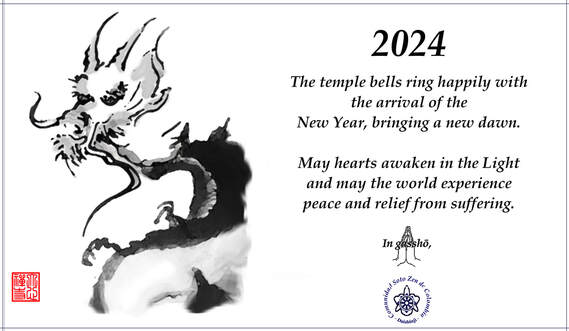 Densho reports from Colombia: "We are at the end of a great year for our temple. Many good things happened and next year we have many plans for our sangha. We have started the adequations of the new land. For the time being, we are not going to start a big construction, so we are not going to have yet a zendo to practice. Instead, we are accommodating the construction that already exists, to begin to sit. We have space to house about 25 people for a simple sesshin. In the land there is a natural source of water for consumption, and we have installed a two-chamber anaerobic septic system, with a grease trap and filtration system for water purification. The water used in the kitchen, the restrooms, and the baths, will return 100% pure back to nature. This is part of our commitment to protect water. We hope to start doing sesshin in the new place, so we do not have to rent a place. At the end of February, I will travel to Caracas, Venezuela, to officiate a Jukai ceremony for 8 members of Dokan sangha, which is guided by Jakusho Pignatiello. Because economic conditions are very bad at present in Venezuela, we are going to have something very simple. Maybe a zazenkai with zazen and Teisho, and next day, the Jukai ceremony." Are we reaching you?Do we have the best and most current contact information for you? If you've changed your e-mail address or moved to a new place of residence, or if we've never had complete information about how to reach you, it's time to update your record. Please take a moment to go here to send us the contact information you'd like us to use. We'll check it against your current record and update as needed. Don't miss any of the upcoming communications from Sanshin -- update your info today!
Sanshin Network
Shodo Spring will offer a class on Dogen's vow beginning January 3 that will include zazen, presentation and discussion. In this three-session class, we’ll clarify the context and meaning of Dogen’s Eihei Koso Hotsuganmon, and explore its implications for our lives and spiritual practice. Attendance is by donation. More information is here. Are we reaching you?
Do we have the best and most current contact information for you? If you've changed your e-mail address or moved to a new place of residence, or if we've never had complete information about how to reach you, it's time to update your record. Please take a moment to go here to send us the contact information you'd like us to use. We'll check it against your current record and update as needed. Don't miss any of the upcoming communications from Sanshin -- update your info today! The importance of zazen
From the Development Committee Mark Jo-e Fraley Sanshin Zen Community's development team is working to end the year strong. We are two-thirds of the way to our year end goal of $25,000. You can help us meet that goal by clicking here to make a donation. We thank everyone who has made a contribution to Sanshin and especially extend our deepest gratitude to Norma Fogelberg, Jeff Alberts, Tonen O'Connor, Neil Chase, Karla Passalacqua, Laura Miller, Komyo Melfi, Henry Coffey, Mark Fraley, and Gene Elias for leading our annual fund drive. Other news
Bye bye bamboo: During the October work day, practitioners completed removal of the large patch of yellow-groove bamboo that had been growing on the northeast edge of the temple grounds since before it was purchased by Sanshin. This was in response to a notice from the city of Bloomington calling for its removal as a recently designated invasive species. Since then, Sawyer, Sanshin's event coordinator, has been coordinating with the local sangha and small farmers in the area to distribute the large number of resulting bamboo poles for re-use in yard and farm projects such as fencing and plant-trellising. A portion of the poles will remain at Sanshinji, primarily for use in fencing around the moss garden. Since the bamboo had to go, we are glad to see it go to good use. Practice recapDharma study intensive: Founding teacher Okumura Roshi gave a series of ten morning lectures focused on Shobogenzo Zazenshin. The virtual-only event was the successor to genzo-e, with a less strenuous lecture schedule for Okumura Roshi. There was no "retreat" schedule beyond the daily lectures and Q&A periods; participants were encouraged to incorporate regular zazen practice throughout the ten days of the study intensive, as their own schedules and time zones allowed. About 40 people participated on any given day, and a crew of three were in the zendo with Okumura Roshi to manage technical systems and provide general support. The next lecture series is on the calendar for May 2 - 11, 2024, with the topic yet to be announced. November work day: Sanshin's monthly work day was aimed at finishing the work of bamboo removal and yard cleanup as well as preparing the building for Rohatsu sesshin. Sangha members began installation of a barn door on the kitchen, constructed fold-down shelves in the hall for use during meal prep, recovered the remaining two chairs in the common room and began work on assembly of new folding tables for use during oryoki meals in the zendo. Coming upHoliday closures: Sanshin will be closed, with no practice activities or administrative work going on.
Rohatsu sesshin (November 30 - December 8): Rohatsu sesshin marks Shakyamuni's awakening under the bodhi tree. On the final evening we sit until midnight and hold a brief chanting service. This is our longest and most intensive sesshin of the year. LEARN MORE Ryaku fusatsu: Our monthly ceremony of renewing our aspiration to practice with the precepts happens December 18 at 7 pm. Both in-person and virtual participation is possible, and everyone is welcome regardless of whether or not you've formally taken precepts. Visit our Schedules and Calendars page for information on all upcoming events. American religious landscapeReligious participation declines as kids grow up: A majority (80%) of Americans say they have a religious affiliation, and about 70% of those call themselves Christian. However, the number of those who have a religious identity and are members of or attend a church, mosque, synagogue or temple has declined steeply in the last 20 years. Although practicing a religion with family as a child is associated with regular participation in later life, most of those who attended regularly as children now say that attend infrequently if at all as adults. Those who are not in the habit of regular religious participation say they think it unlikely their pattern will change. Nonetheless, 16% of US adults who did not attend as children now attend weekly or nearly every week now. LEARN MORE Sanshin NetworkGerman-language discussion of a text: "Dharma Dinge," a free exchange about short dharma texts takes place via Zoom every Tuesday from 7-8 pm CET. It is meant to be a safe place to share ideas and explore what this means for our lives. Participants take turns in suggesting texts and moderating the group. If you are interested, please email Jinryu Wachowitz. Minnesota sesshin: Mountains and Waters Zen Community will hold Rohatsu sesshin December 1-7. Arrival is on Thursday evening November 30, with orientation on Friday morning. Partial participation is welcome, and arrangements will be made for less experienced practitioners. For details and registration, see this page.
Are we reaching you?
Do we have the best and most current contact information for you? If you've changed your e-mail address or moved to a new place of residence, or if we've never had complete information about how to reach you, it's time to update your record. Please take a moment to go here to send us the contact information you'd like us to use. We'll check it against your current record and update as needed. Don't miss any of the upcoming communications from Sanshin -- update your info today!
Practice recapWork days: In September, completed tasks included taking down two trees and the viburnum bush in the front yard; assembling two small flat-pack tables for the zendo to replace the very wobbly ones in use for talks and ceremonies; installing a motion-detector light in the changing room; and continuing bamboo removal and processing. This month, practitioners took down two more trees on Sanshin property, a dead cherry at the rear north side and a tree that was leaning heavily on the northside front fence. They also completed removal of the bamboo grove. 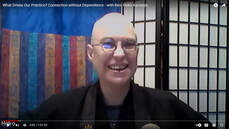 Hoko's visits: Hoko gave a Saturday morning virtual talk on non-reliance and the basics of Sanshin style for Great Tree Zen Women's Temple in Asheville, NC as the first talk in a series on our anniversary book, Adding Beauty to Brocade. The video recording is here. She also went to St. Paul to attend a workshop on various robe-related activities led by Shosan Austin from San Francisco Zen Center. Okumura Roshi in Pennsylvania: Okumura Roshi is in Pittsburgh for the weekend, participating in his last sesshin with Stillpoint, a lay practice group. Coming up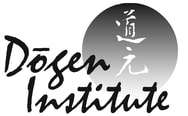 Virtual dharma study intensive (November 1 - 10): Founding teacher Okumura Roshi will be giving a series of ten lectures, one each morning, focused on Shobogenzo Zazenshin. This virtual-only ten-day event will be the successor to genzo-e, with a less strenuous lecture schedule for Okumura Roshi. There is no 'retreat' schedule beyond the daily lectures and Q&A periods -- participants are encouraged to incorporate regular zazen practice throughout the ten days of the study intensive, as their own schedules and time zones allow. Practitioners are invited to join the regular morning practice schedule being carried out at Sanshinji before most of the lectures. For further details and to register, please visit our virtual dharma study intensive webpage. 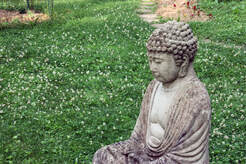 Rohatsu sesshin (November 30 - December 8): Rohatsu sesshin marks Shakyamuni's awakening under the bodhi tree. On the final evening we sit until midnight and hold a brief chanting service. This is our longest and most intensive sesshin of the year. LEARN MORE Visit our Schedules and Calendars page for information on all upcoming events. American religious landscapeReligion and wellbeing: Recent studies about the role and effect of religion in people's lives have uncovered a paradox. While fewer and fewer people in many parts of the world say they are religious, scholarship is showing the potentially positive effects of faith on wellbeing in a time of heightened negative emotions. According to Gallup, "Factors that may be behind this seeming paradox are lack of awareness of the faith-wellbeing relationship; generational influences; “othering” -- viewing/treating a person or group of people differently from oneself; religious polarization; and the evolution of religious practice." Religious people report better experiences in these areas:
Sanshin Network
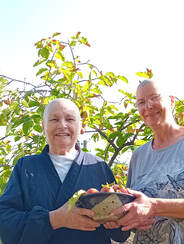 The fruit of practice in France: Shoju Mahler has planted a persimmon tree long years ago in the garden of Zendo L’Eau Vive / Hosuiji in France to honor Uchiyama Roshi's teaching „Practice and Persimmons“. The persimmon takes a long, patient, caring time to ripen into sweetness. Shoju and Jinryu Wachowitz, a novice in the Sanshin lineage from Germany, share the small but very sweet persimmon fruit during Jinryu's one month practice time at Hosuiji. 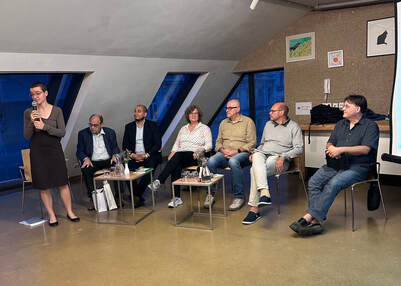 Interfaith Panel Discussion on Contemplative Care in Vienna: Koryu and Shinko from Vienna recently translated and published “Contemplative Care”, the German edition of “The Arts of Contemplative Care”, a standard textbook on Buddhist chaplaincy. Instead of a “classic” book launch event, their NGO “1000 Hände” organized an interfaith panel discussion. Catholic, Protestant, Muslim, and Buddhist Chaplains, who work in prisons, hospitals, and hospices, discussed the topic: “How Can We Help in Times of Crisis?” Both the panelists and audience, in person and online, engaged in lively discussions. What is the difference between chaplaincy and psychotherapy? Is spiritual and religious support seen as important in today’s secular European world? Is it okay to get paid for chaplaincy? Two hours were hardly enough to plunge into the depths of many of these issues, so a follow-up event will be organized in Spring 2024. 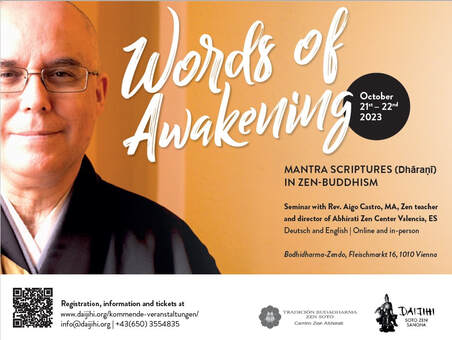 “Words of Awakening”: English Lecture on Dharanis on Zoom and in Vienna in October: On October 21st and 22nd, Daijihi Vienna will invite Spanish dharma teacher Rev. Aigo Castro, MA, to give a lecture on the origin, history, and practical aspects of Dharani. Dharanis are chanted on a daily basis in Zen centers all around the world, yet practitioners are often unaware of their meaning. Rev. Aigo Castro, who speaks Sanskrit, Chinese, and Japanese, will share his vast knowledge about the meaning and practical applications of dharani, from pre-Vedic times to present-day Japan and the West. We know from experience that Aigo’s lectures are very detailed and informative, and his lively and engaging way of delivering them makes it easy to listen closely and absorb the knowledge. The seminar is suitable for both Buddhist practitioners of all traditions and people with a scholarly interest in East Asian cultural and religious history. Aigo will give his lecture in English, Koryu will translate consecutively into German. The event will be live streamed online via Zoom. You can buy a ticket here (30€), and we will send the Zoom link via email. For more details, visit Daijihi (EN) and watch our video teaser trailer (with English subtitles). For complete information about Sanshin and our style of practice, visit our homepage.
|
Sangha NewsOur newsletter is posted once a month. Sign up for our mailing list to get notifications of new issues. Archives
July 2024
|
||||||||||||||||||||||||||||||||||||||||||||||||||||||||||||||||||||||||||||||||||||||||||||||||||||||||||||||||||||||||||||||||||||

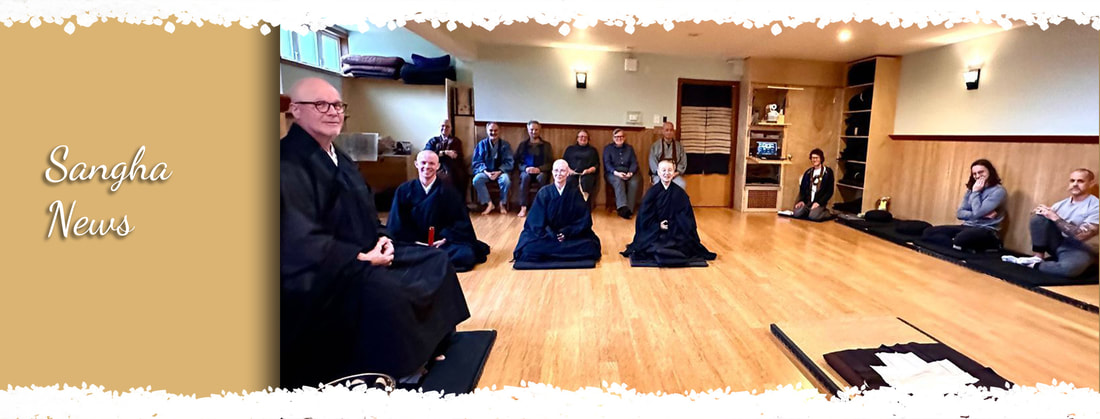




















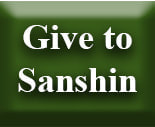

















































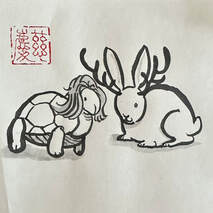

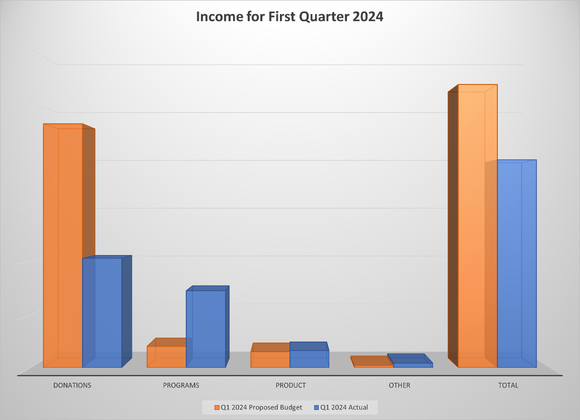



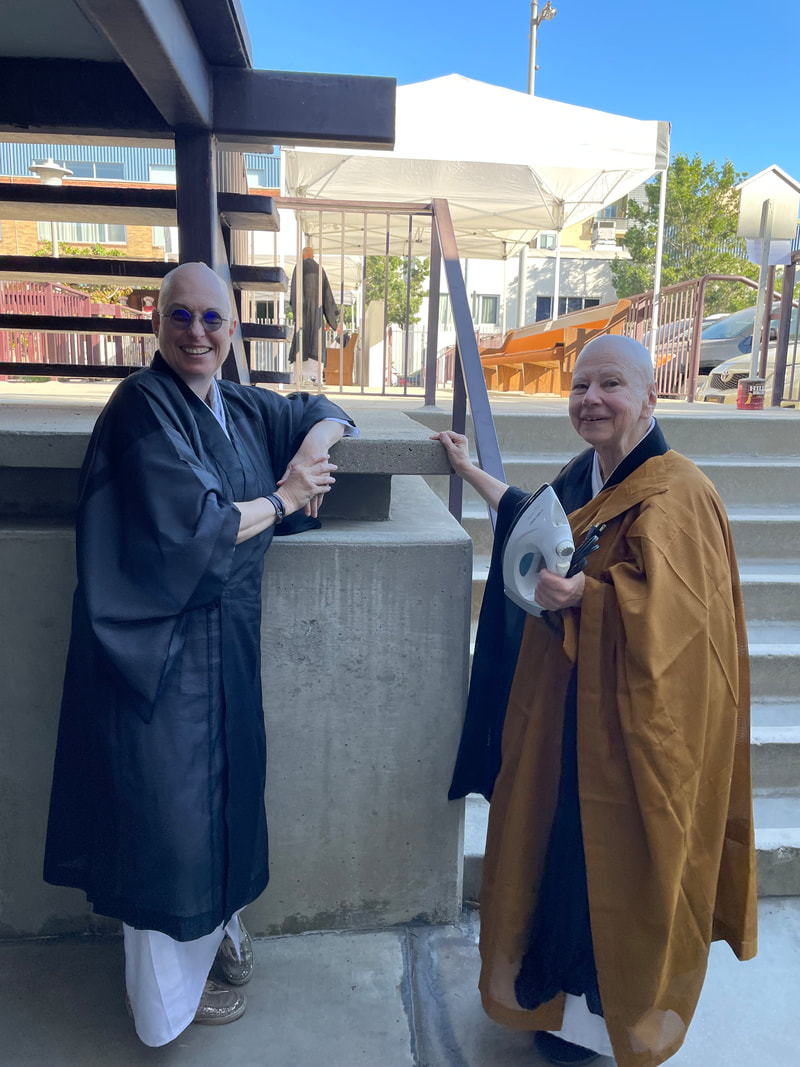


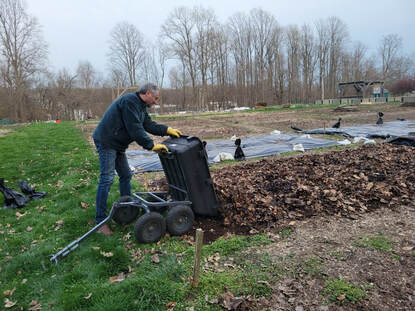
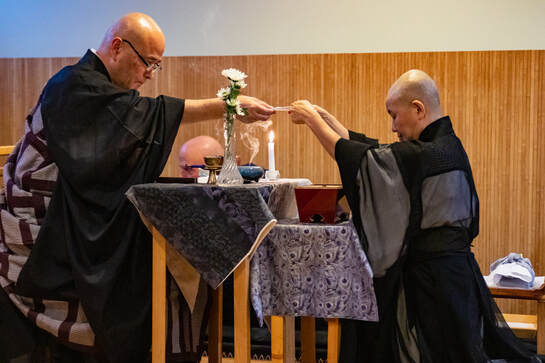

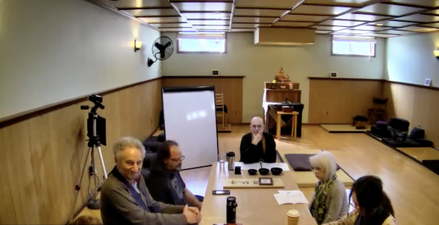

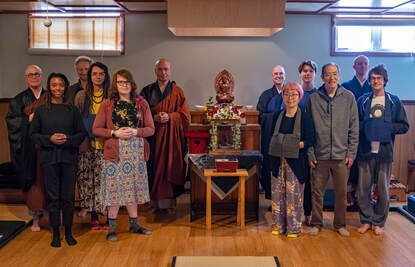
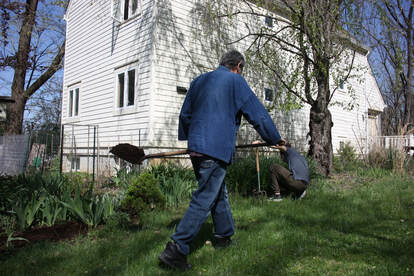
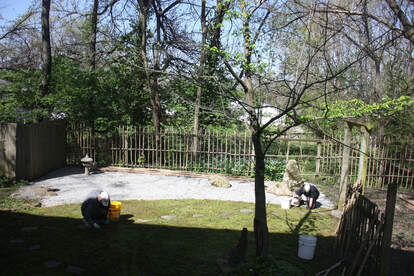
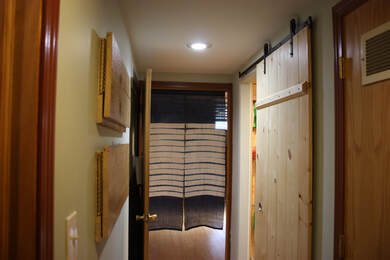
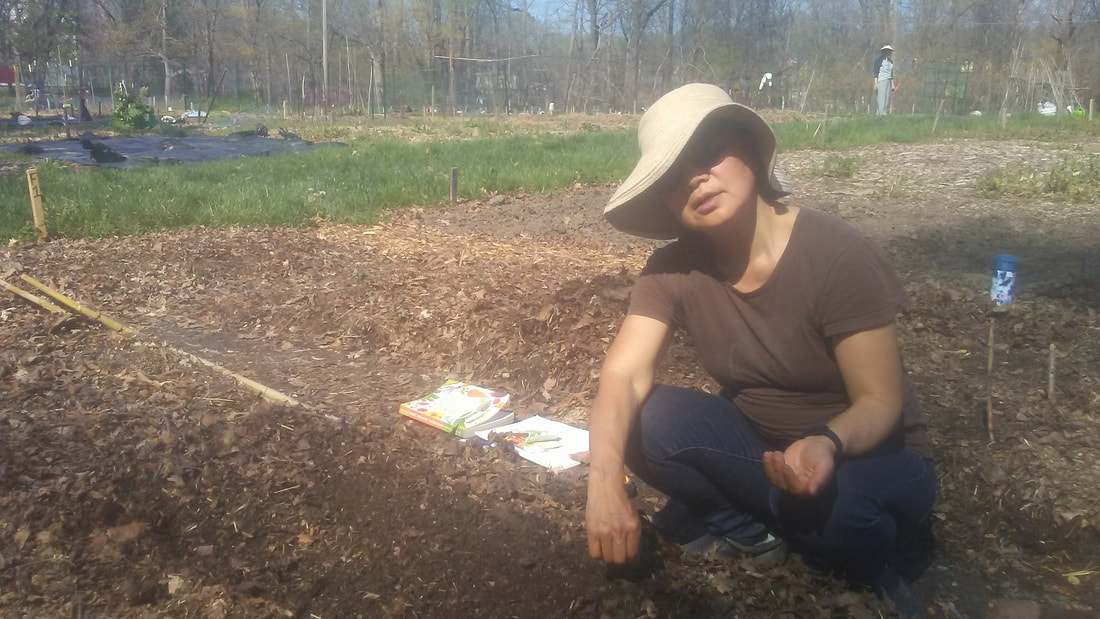


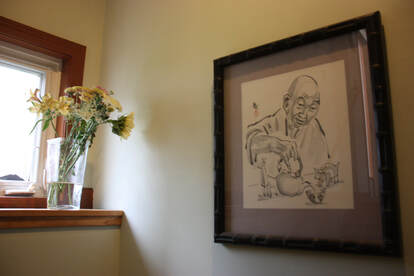
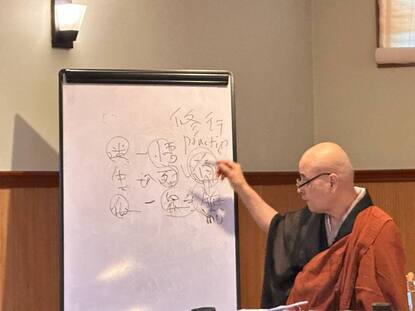
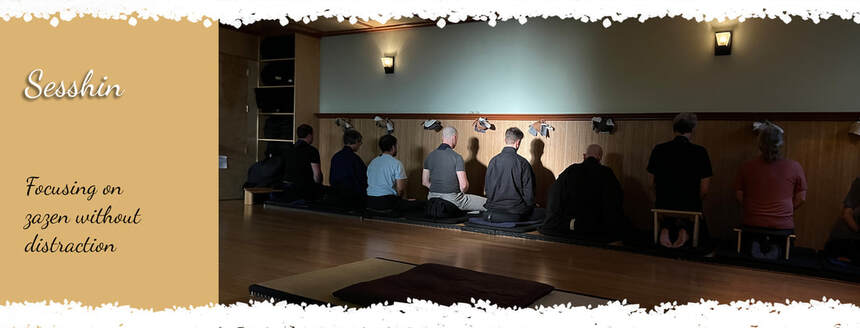


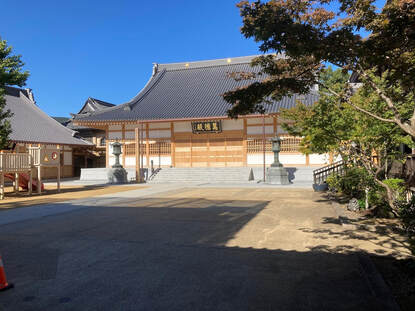
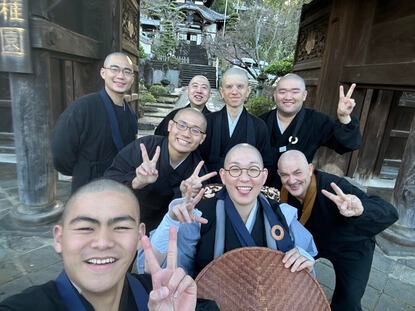
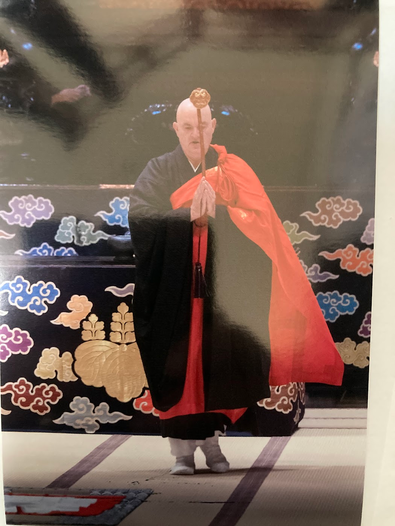
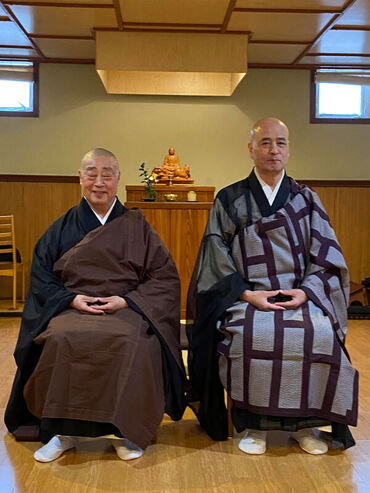
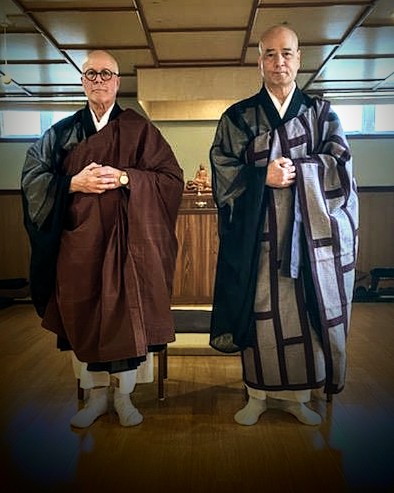

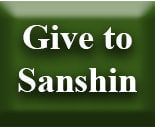

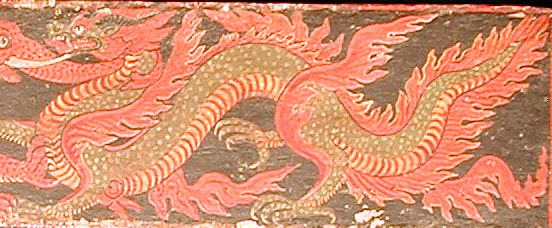

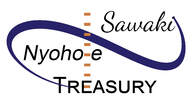
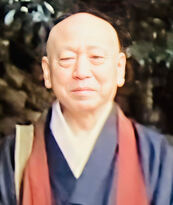

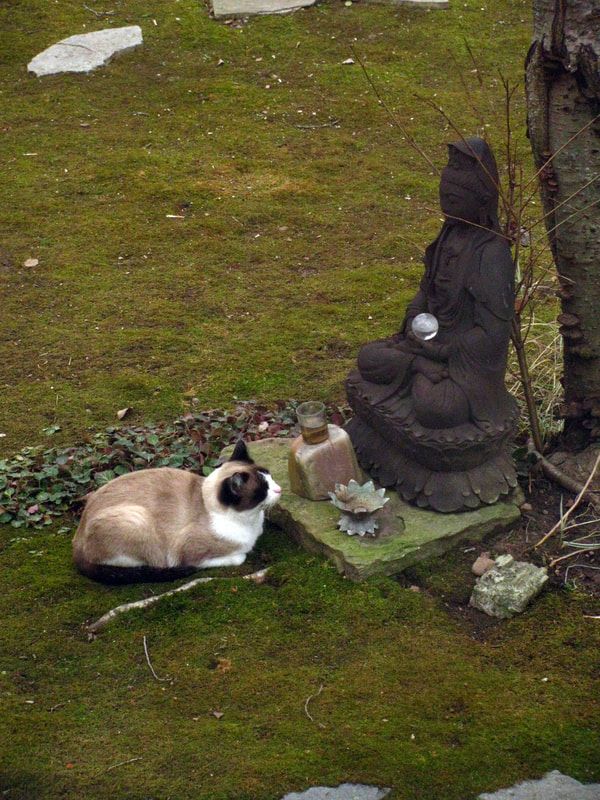
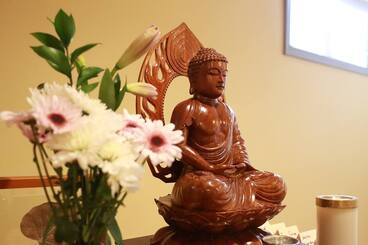
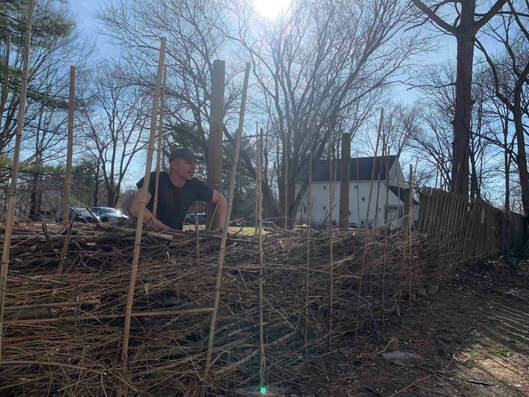
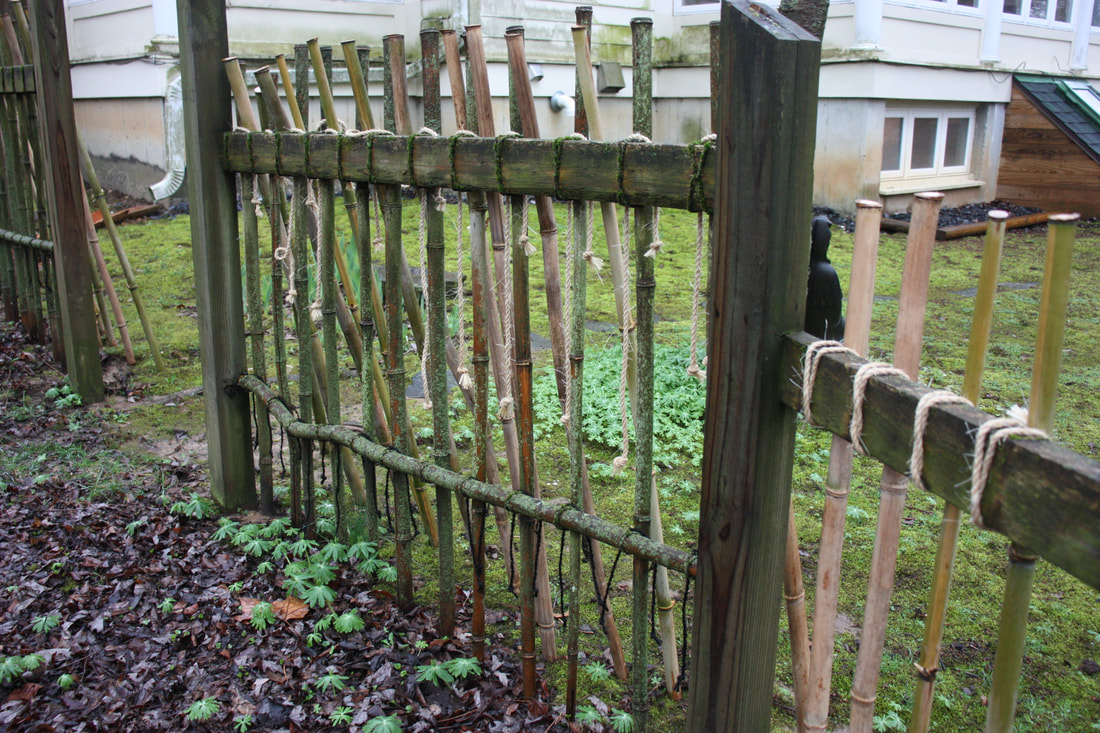
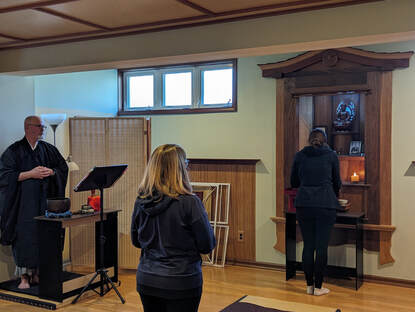
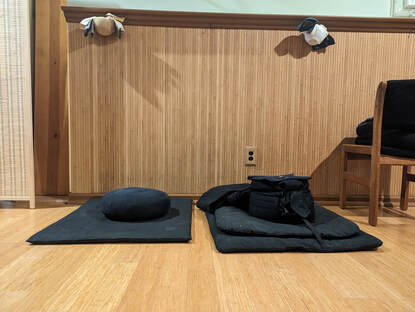

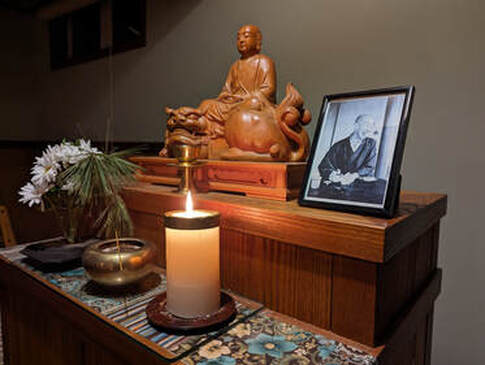
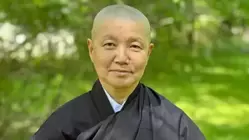

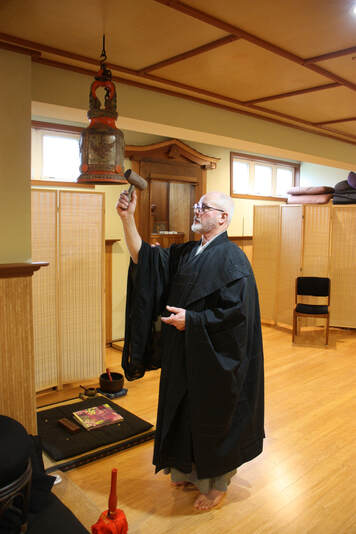
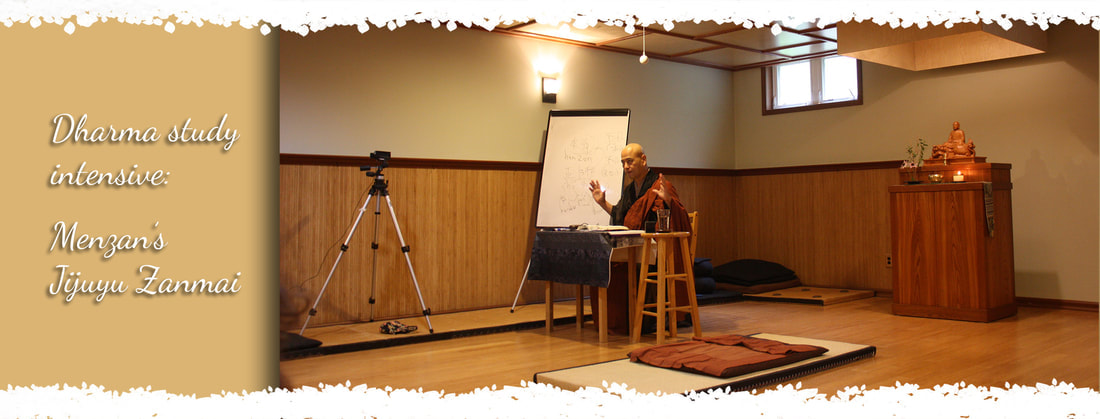
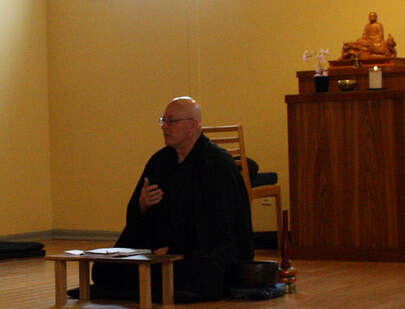
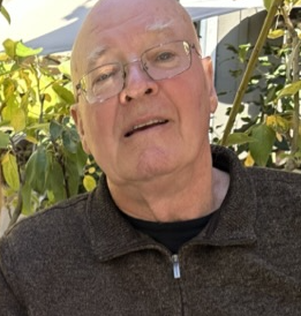
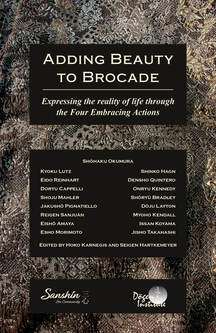
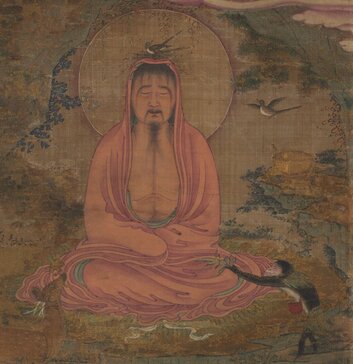


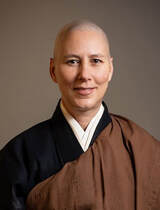
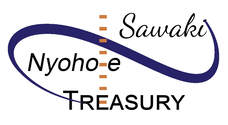



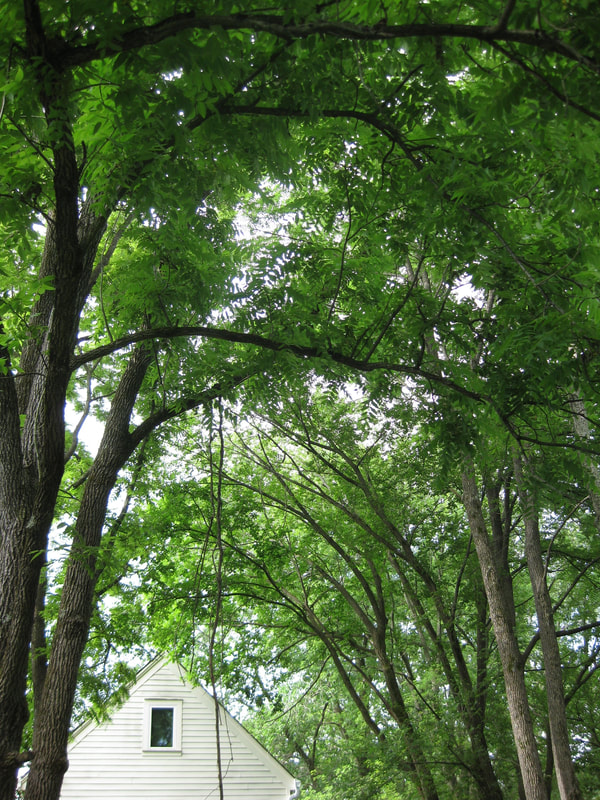
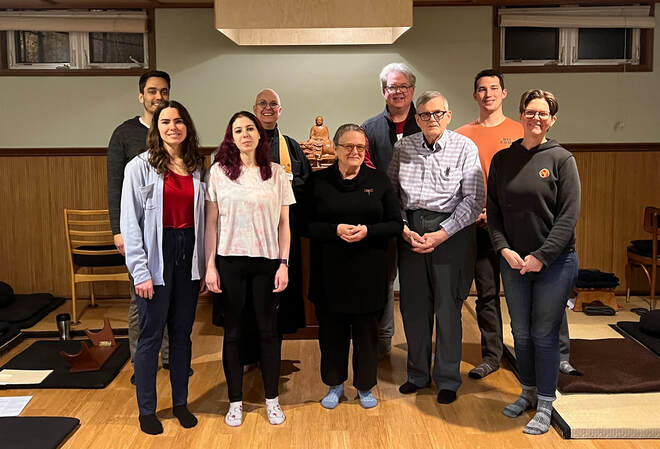
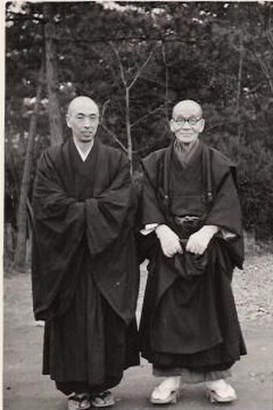


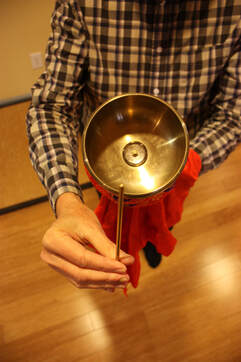
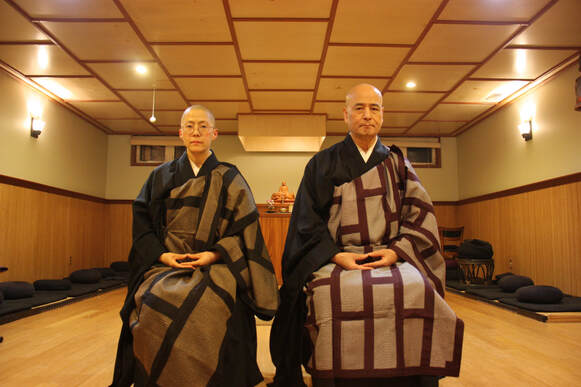

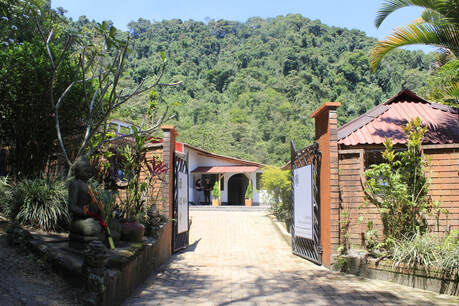
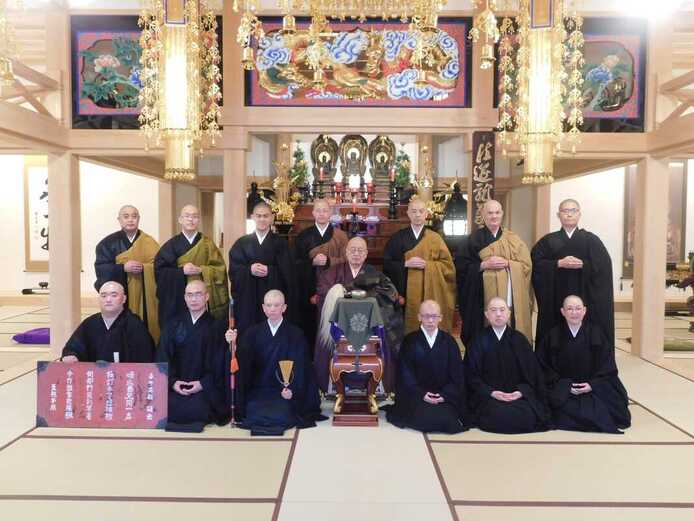
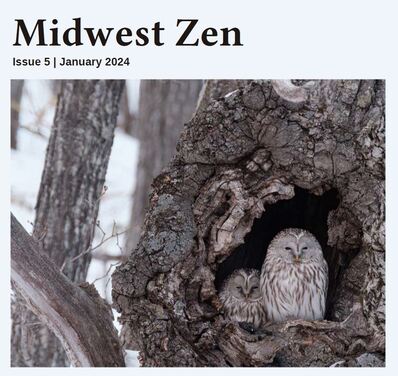
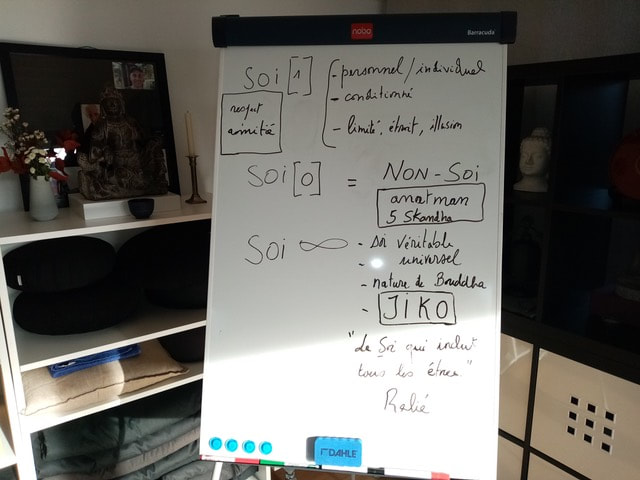
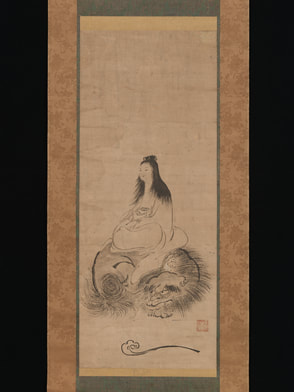


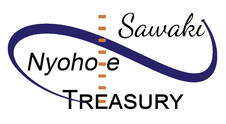
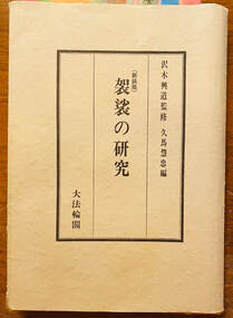

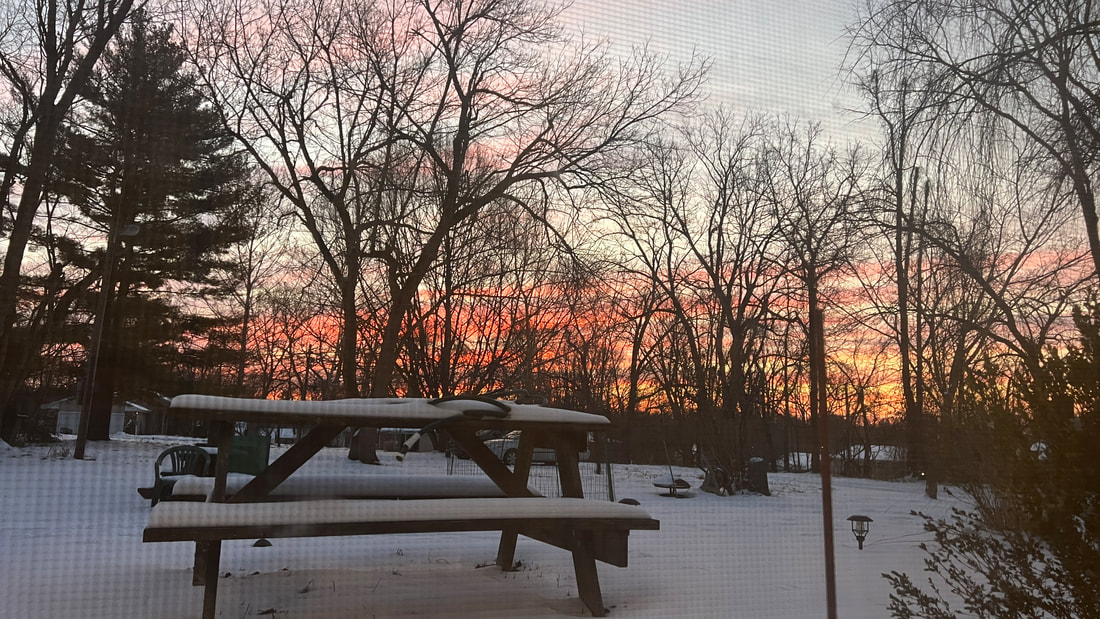

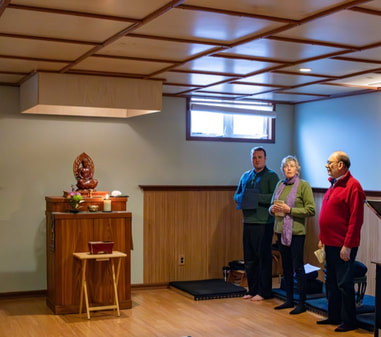
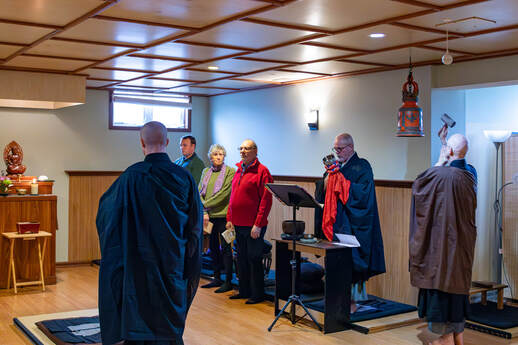
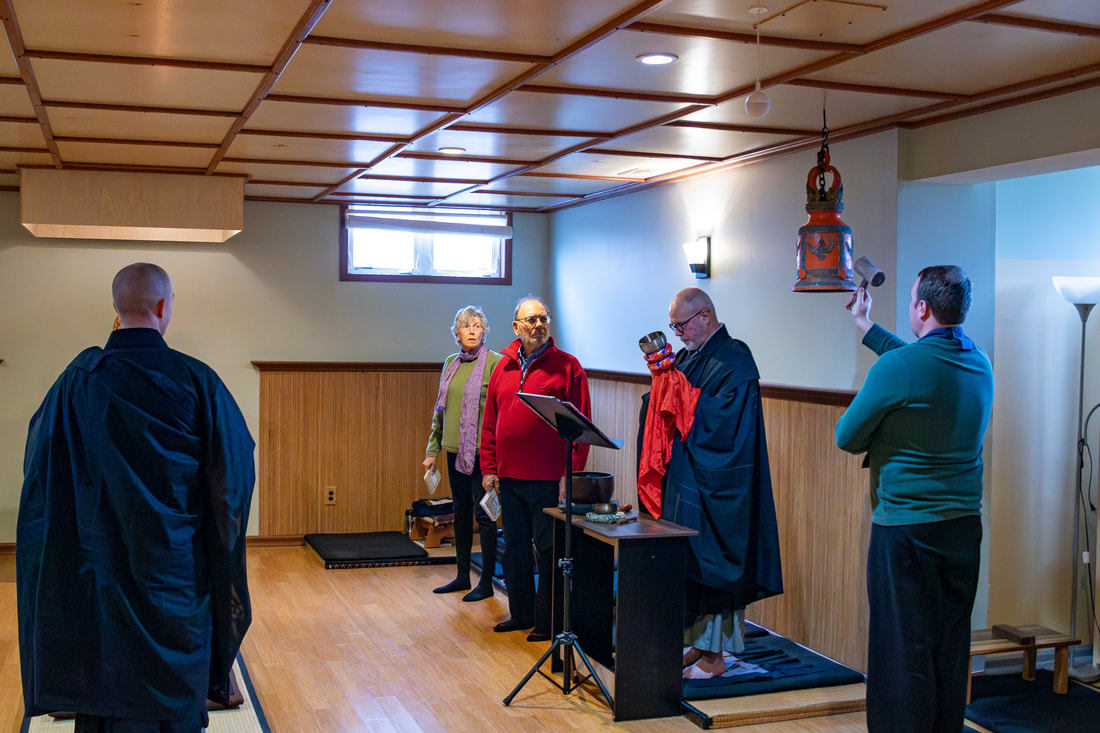
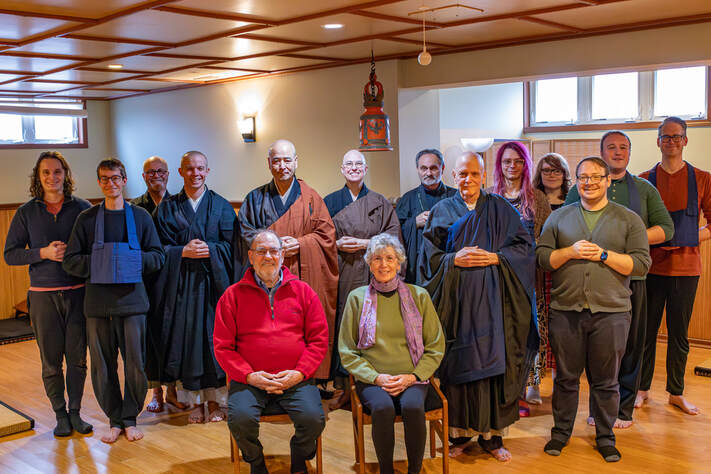
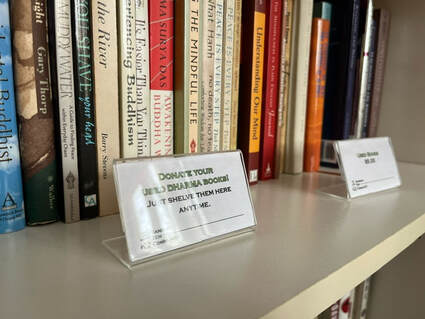
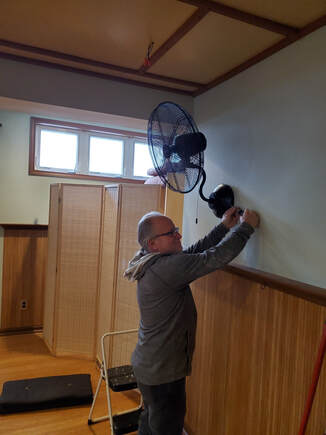
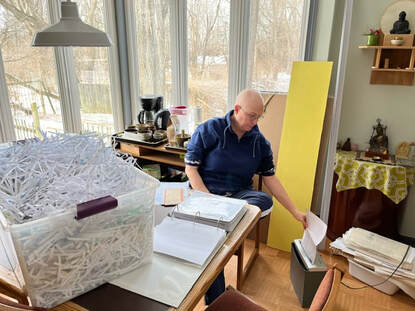

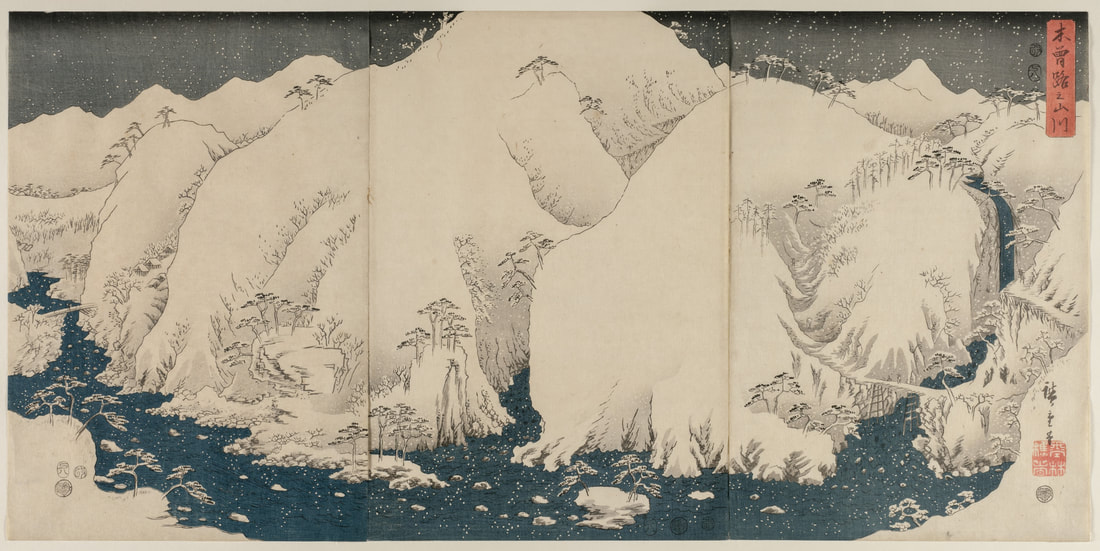

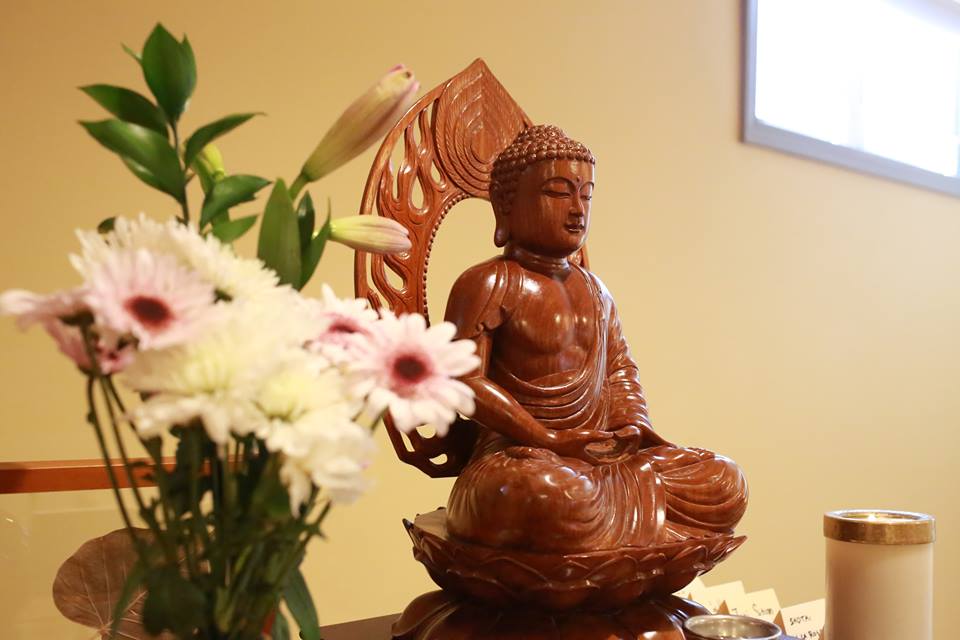





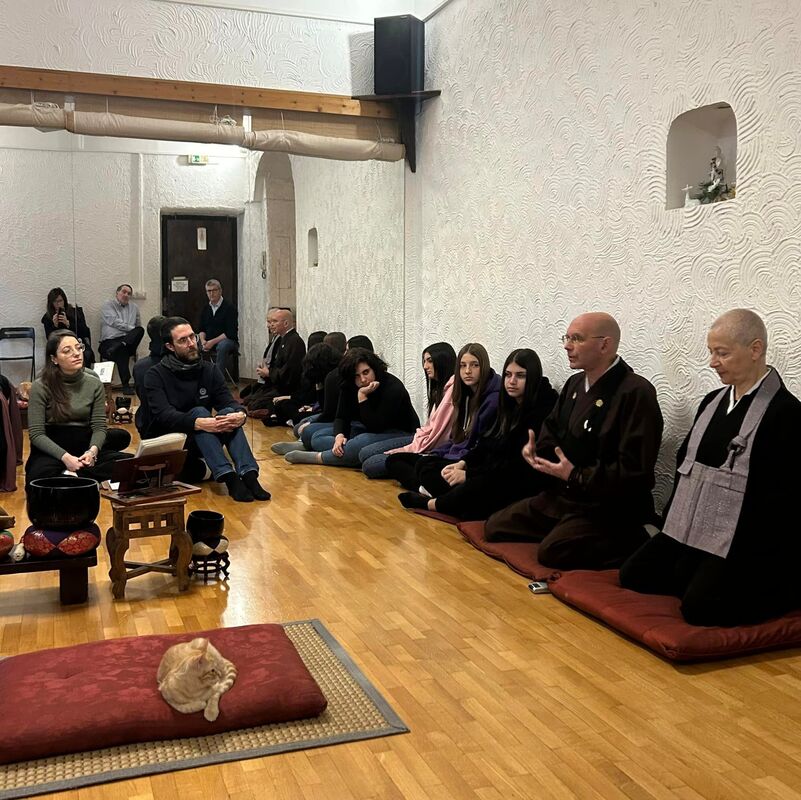

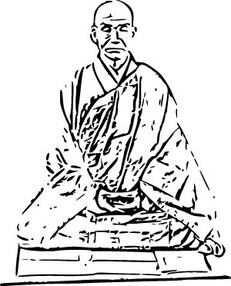
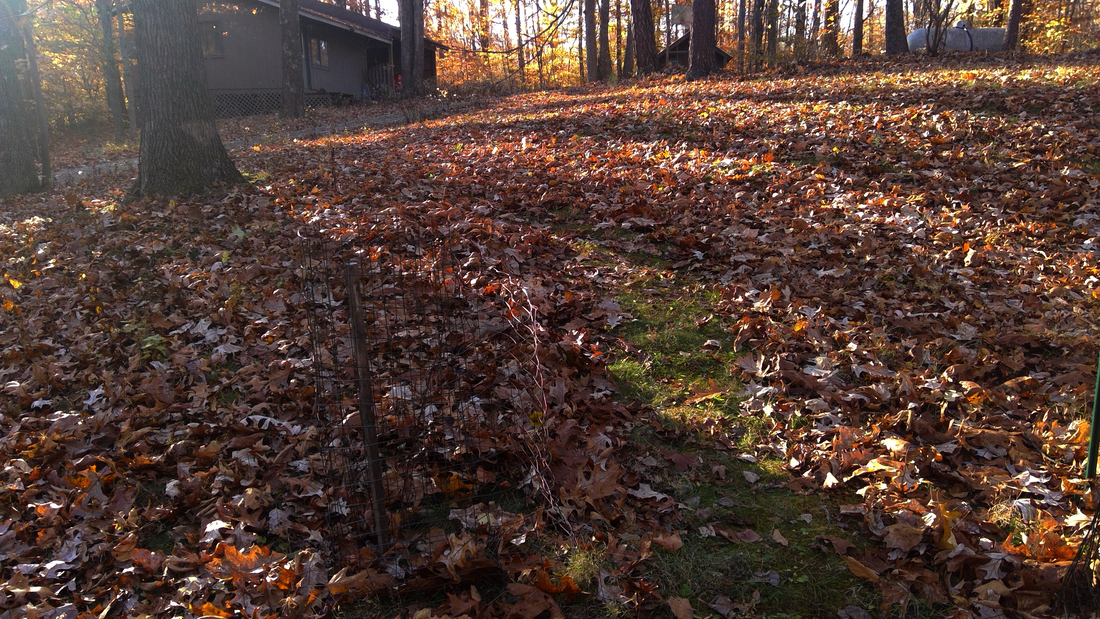



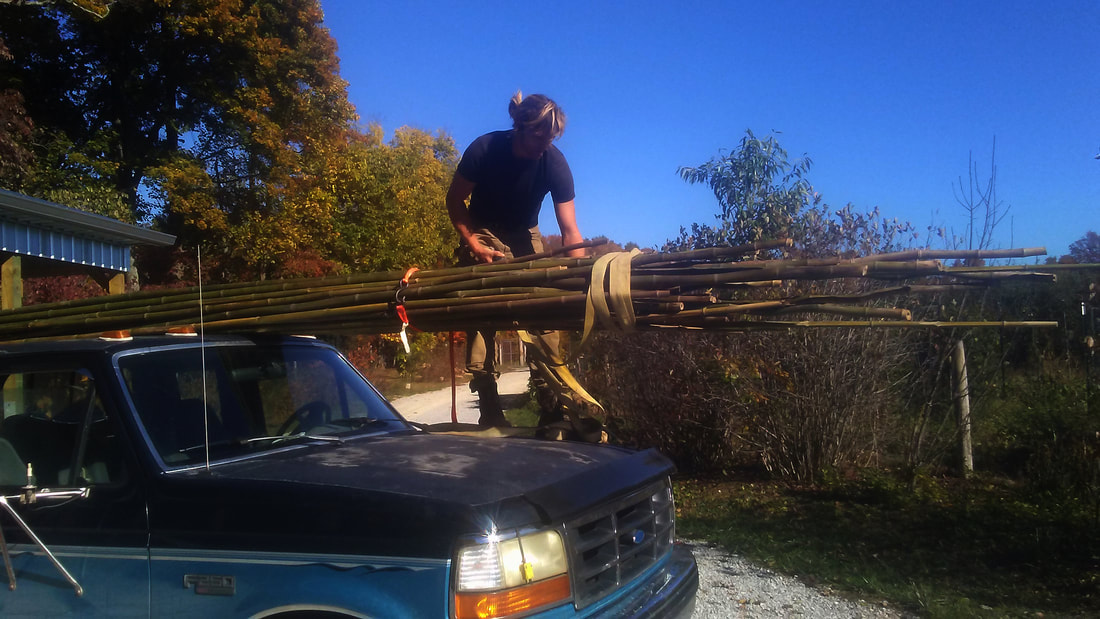
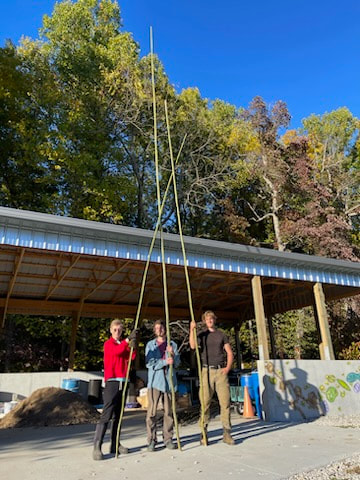
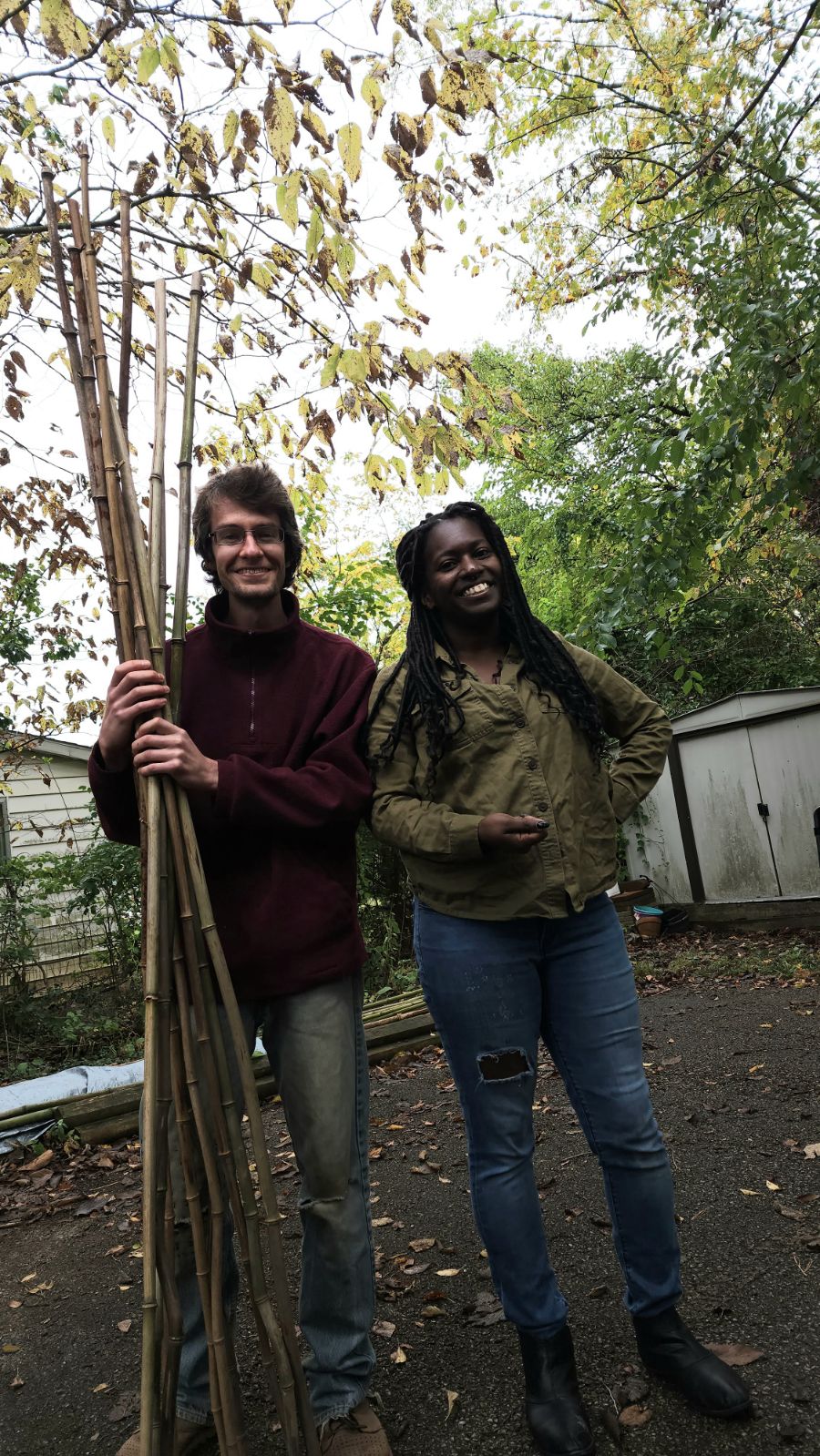

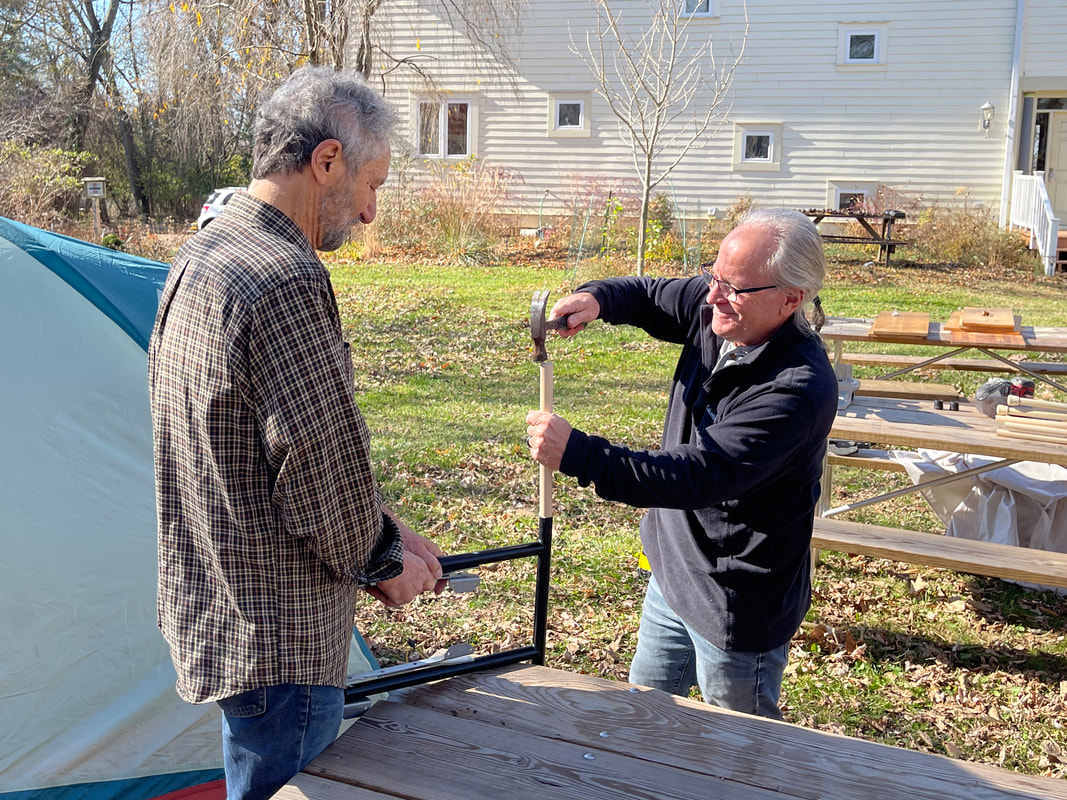
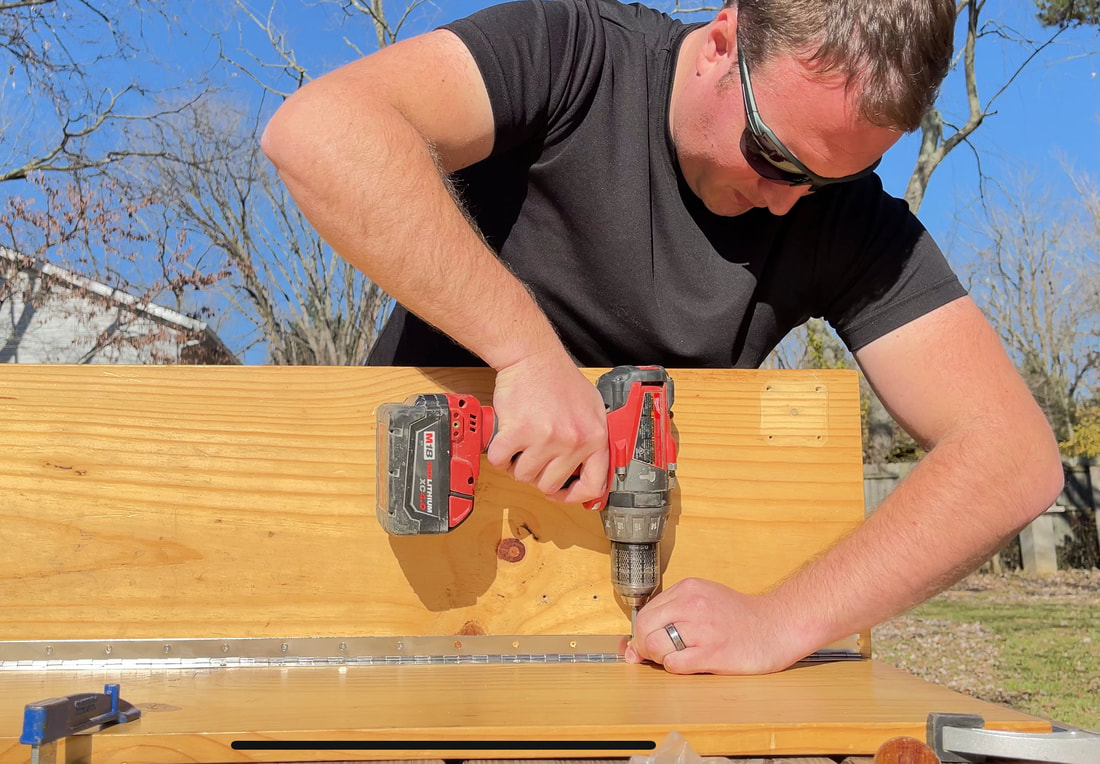
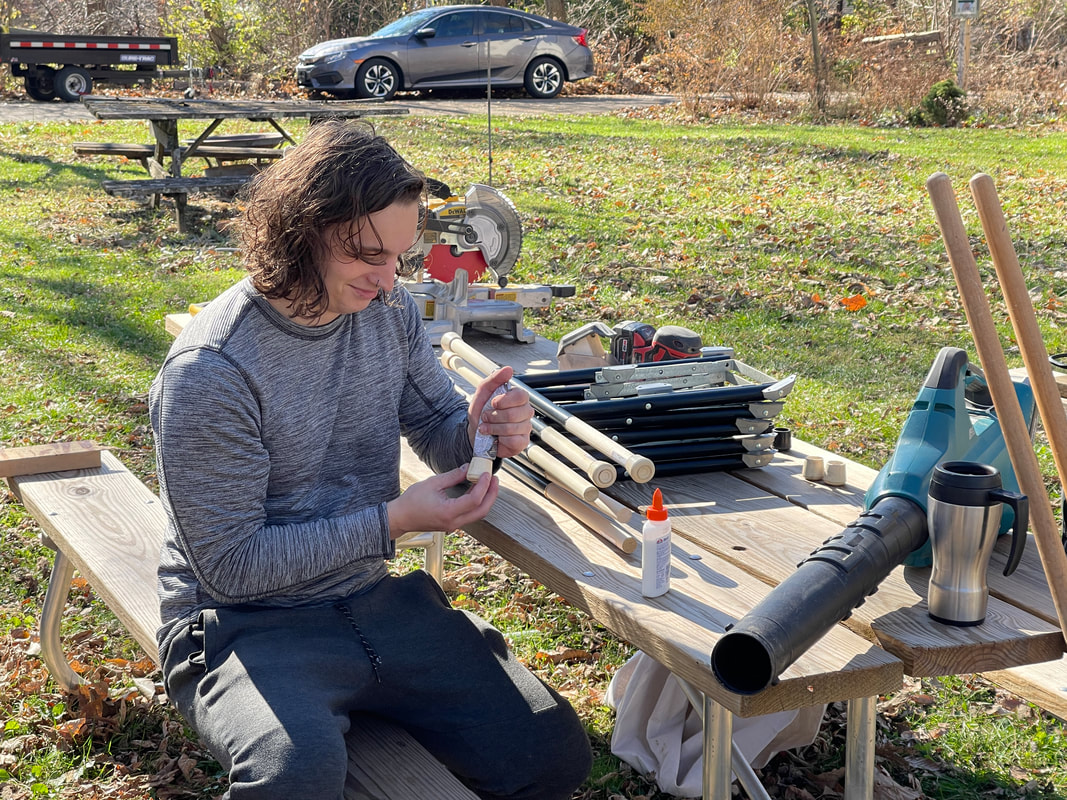
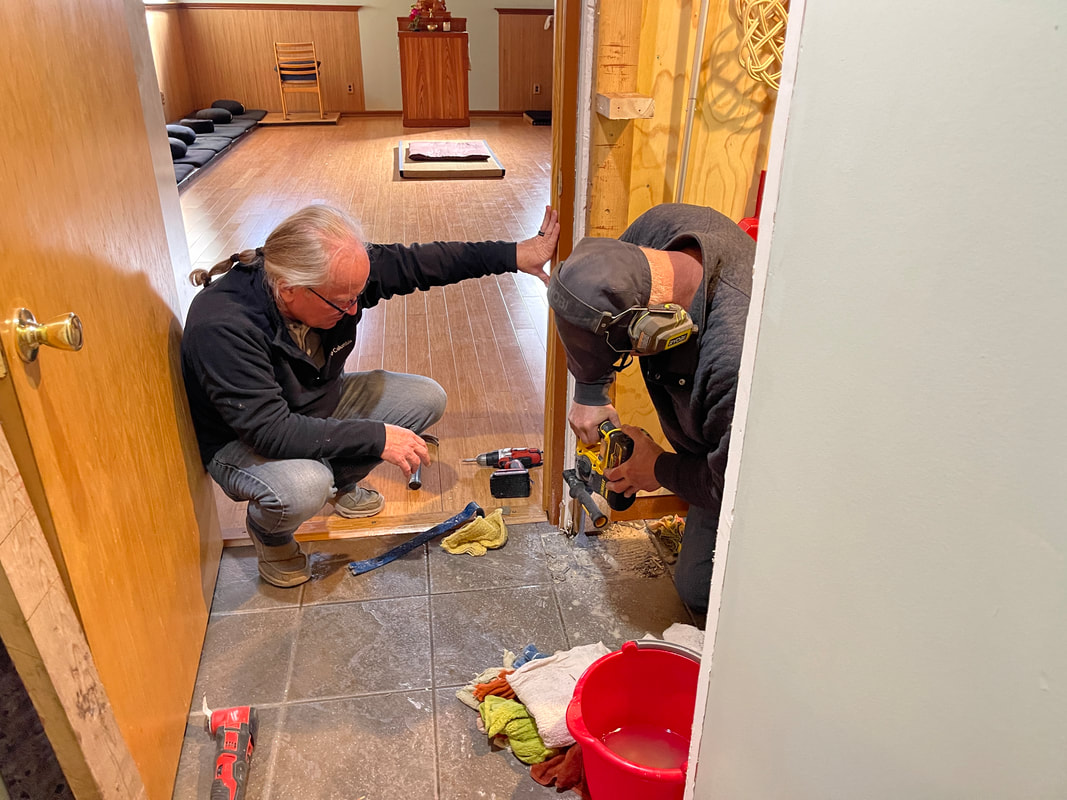




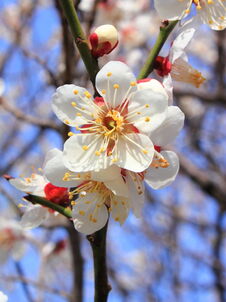



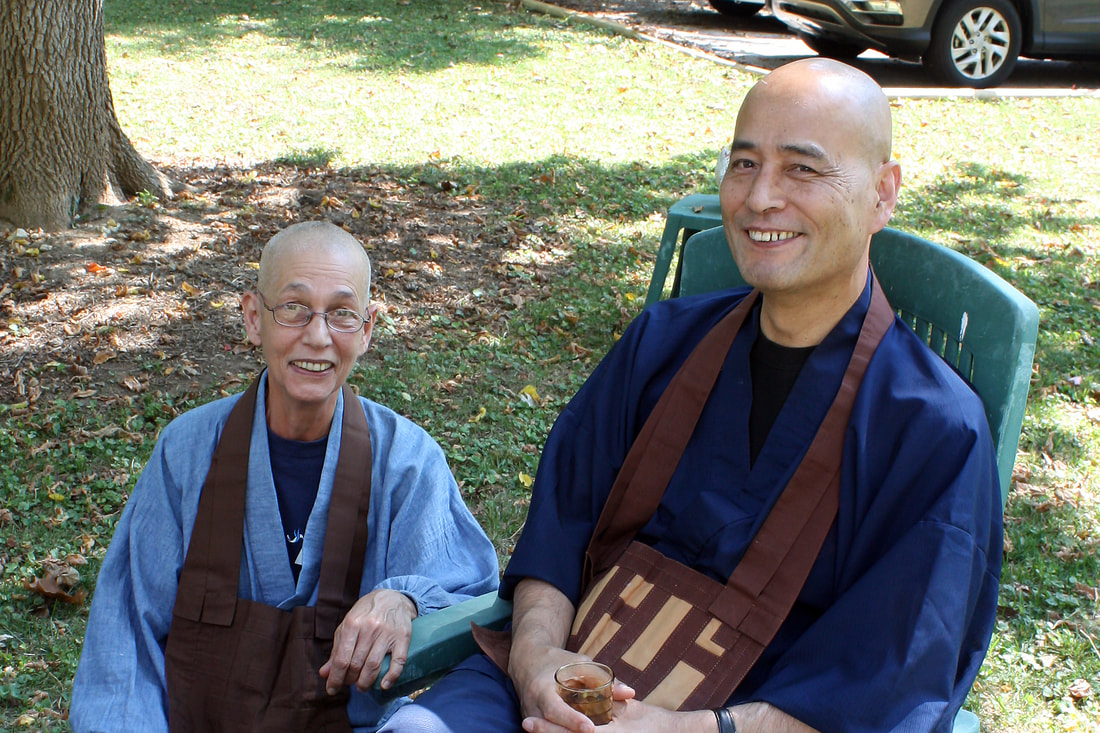
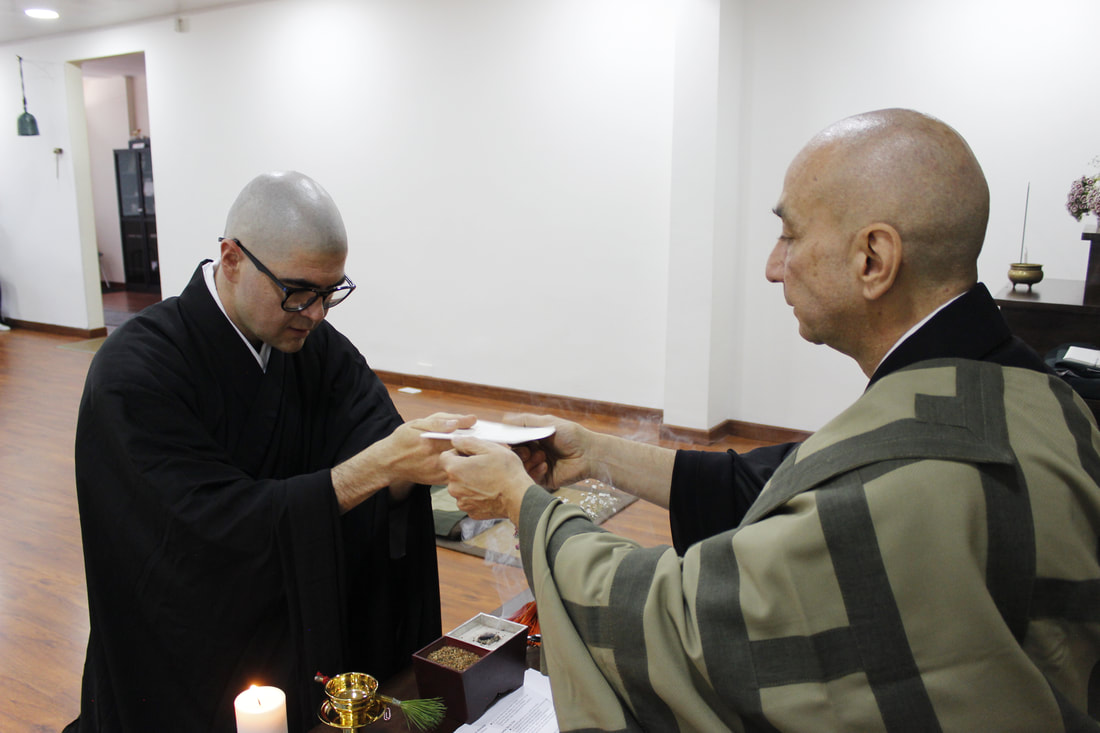
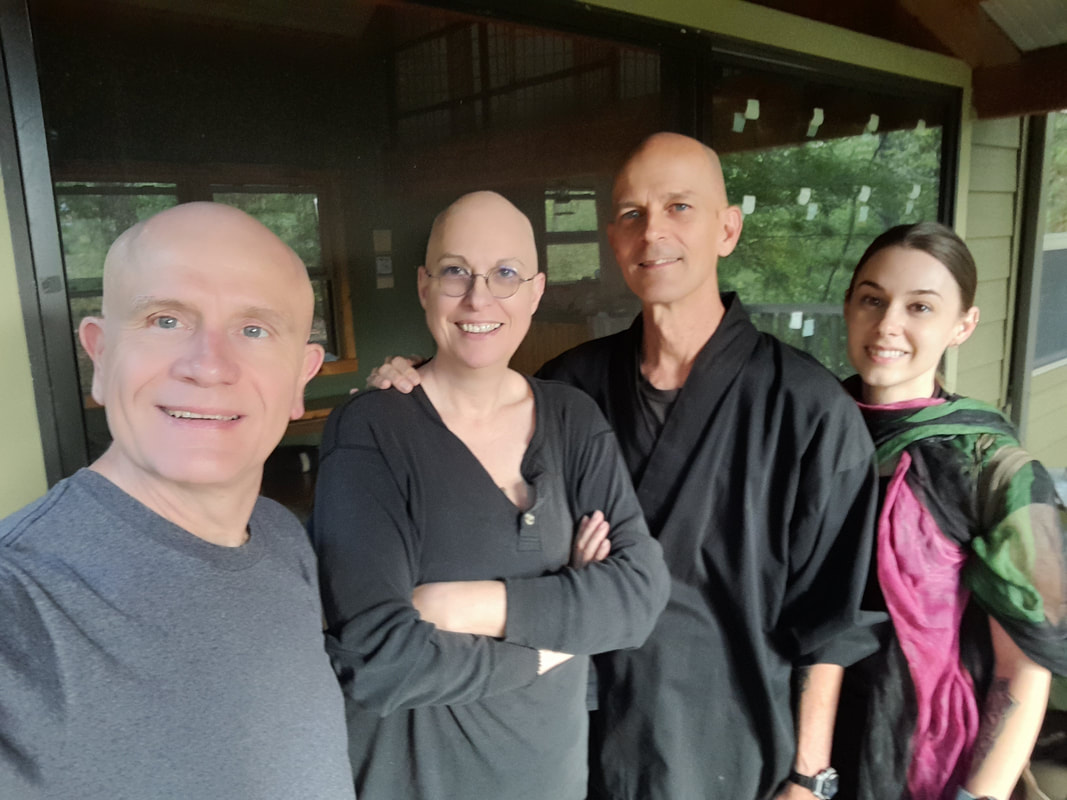
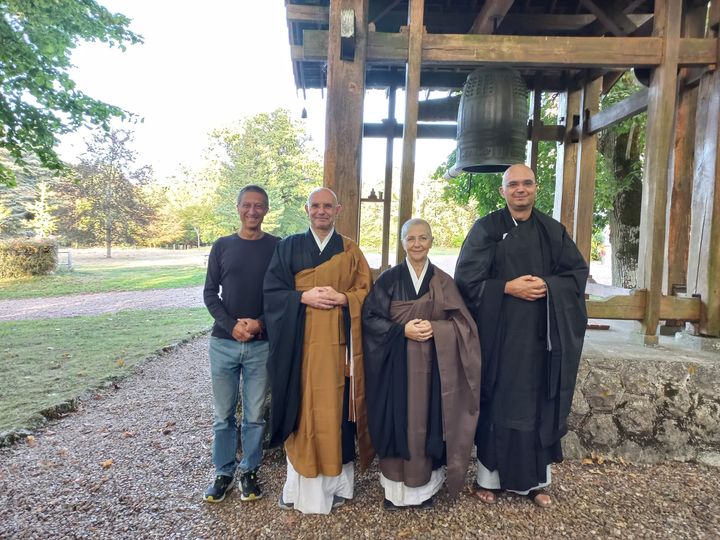

 RSS Feed
RSS Feed